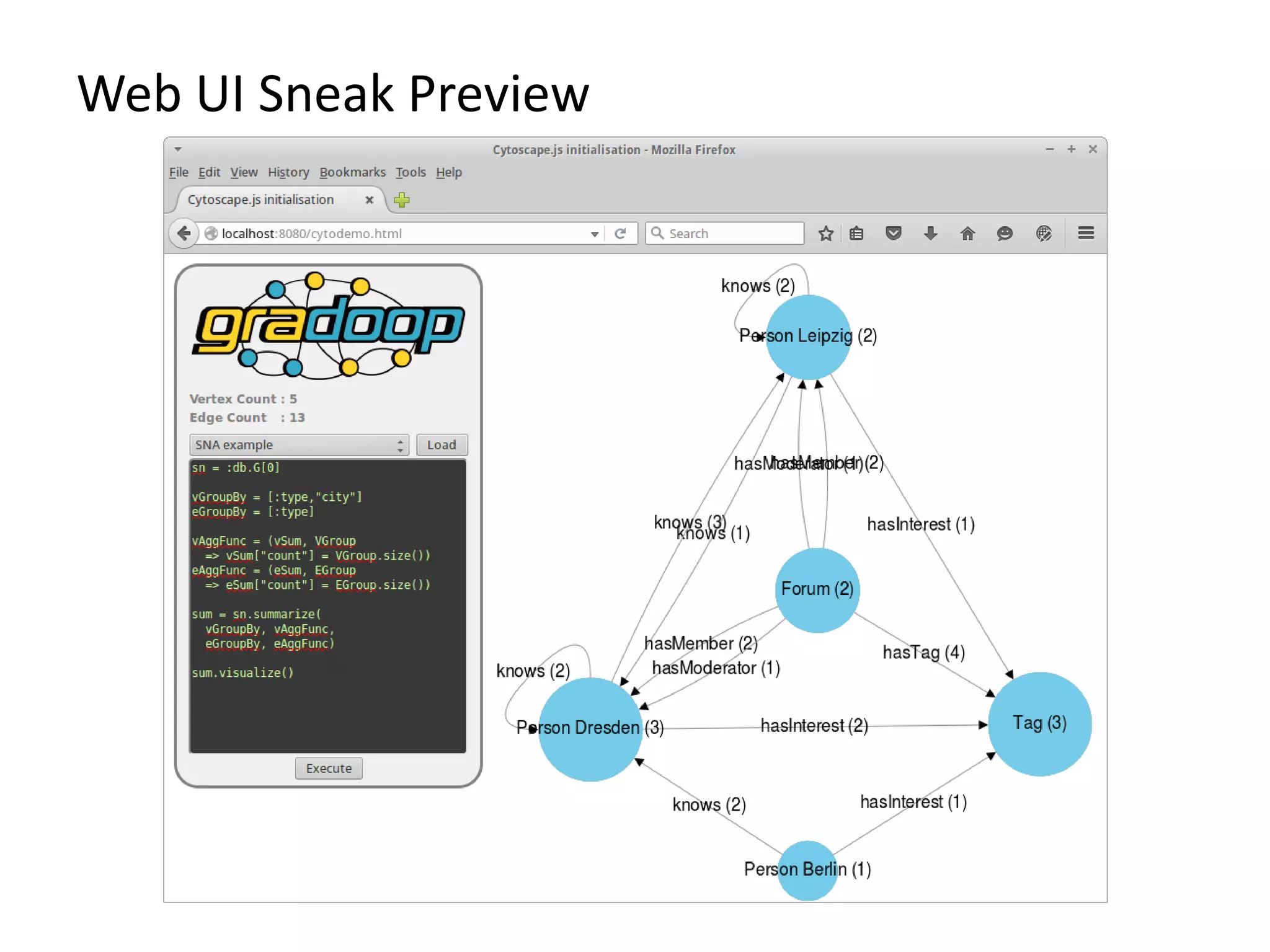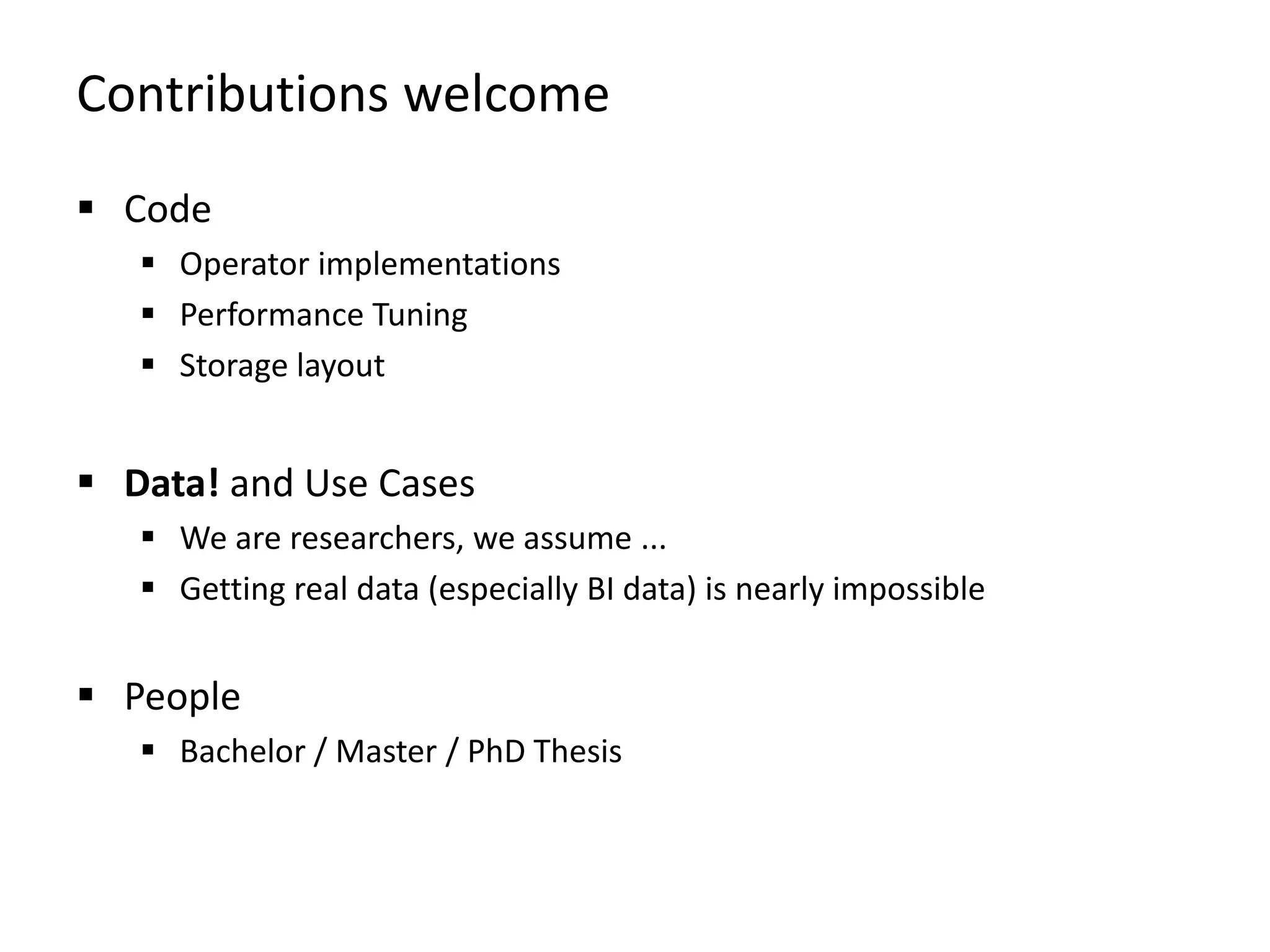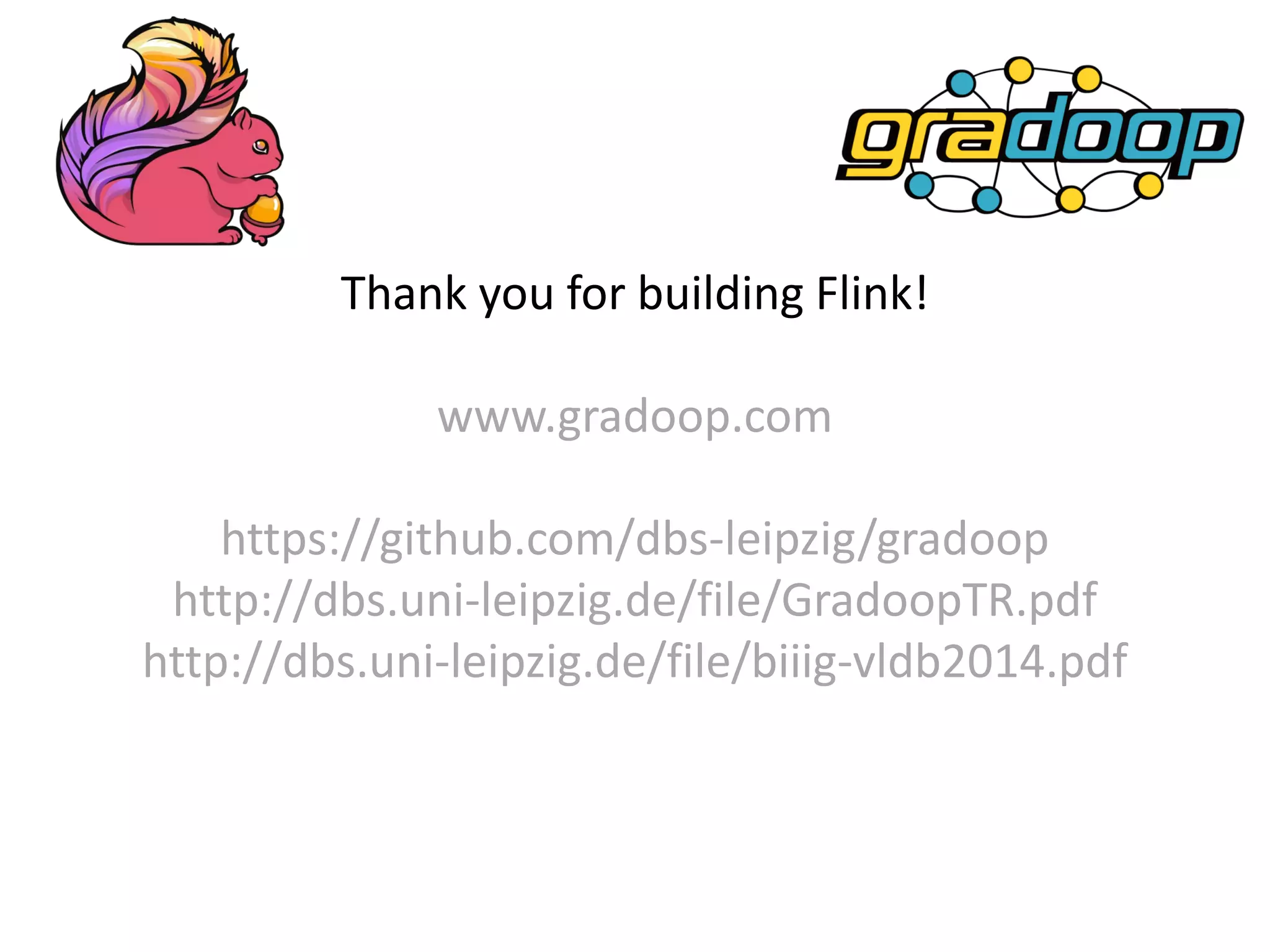The document provides an overview of Gradoop, a scalable graph analytics platform using Apache Flink, highlighting its architecture, data integration, and graph analytics capabilities. It also discusses the significance of graph data in various applications, particularly in business intelligence, and emphasizes the need for an end-to-end framework for effective graph data management. Key features, operators, and use cases are illustrated to demonstrate the platform's ability to analyze complex relationships within large datasets.
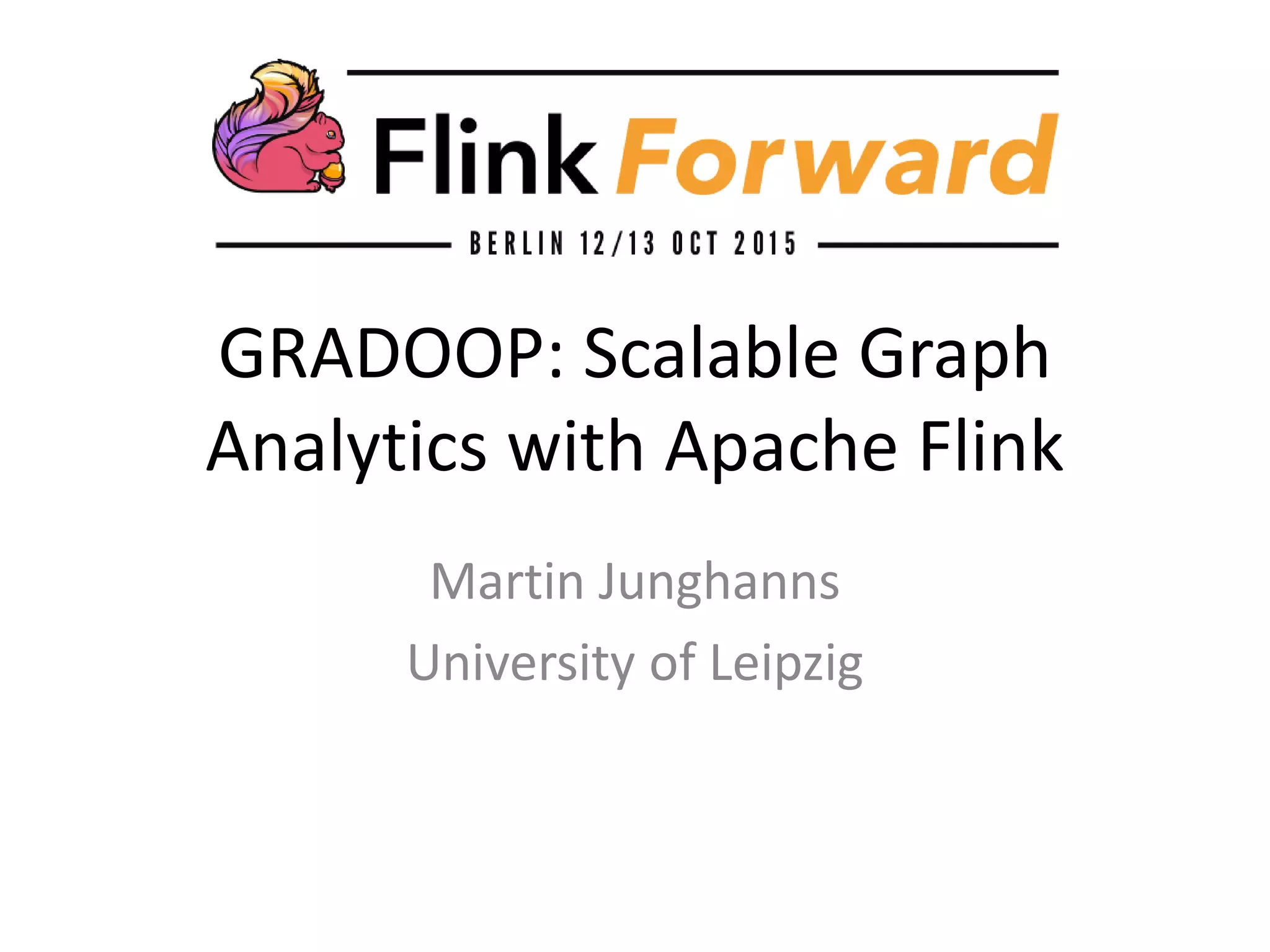
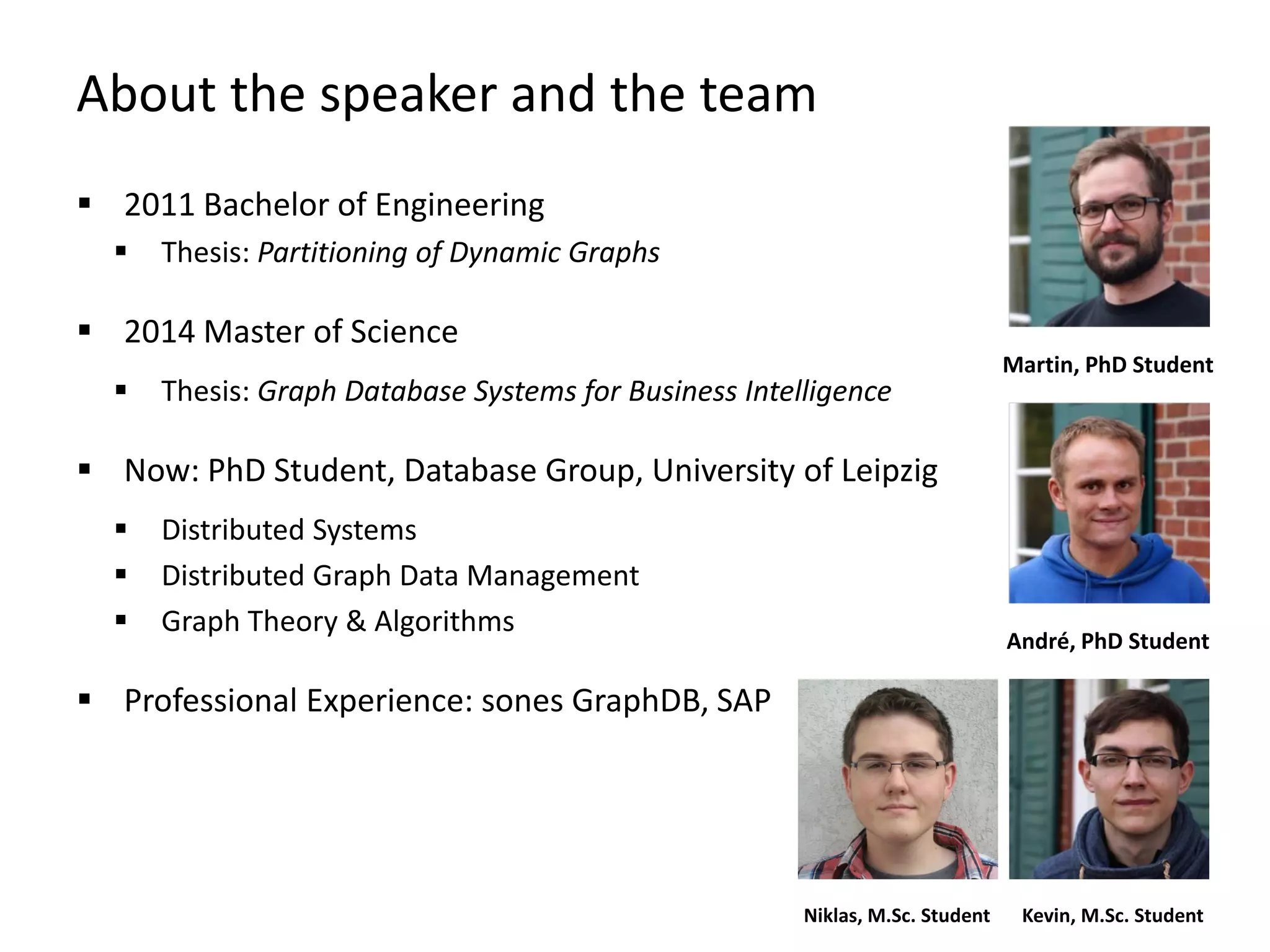

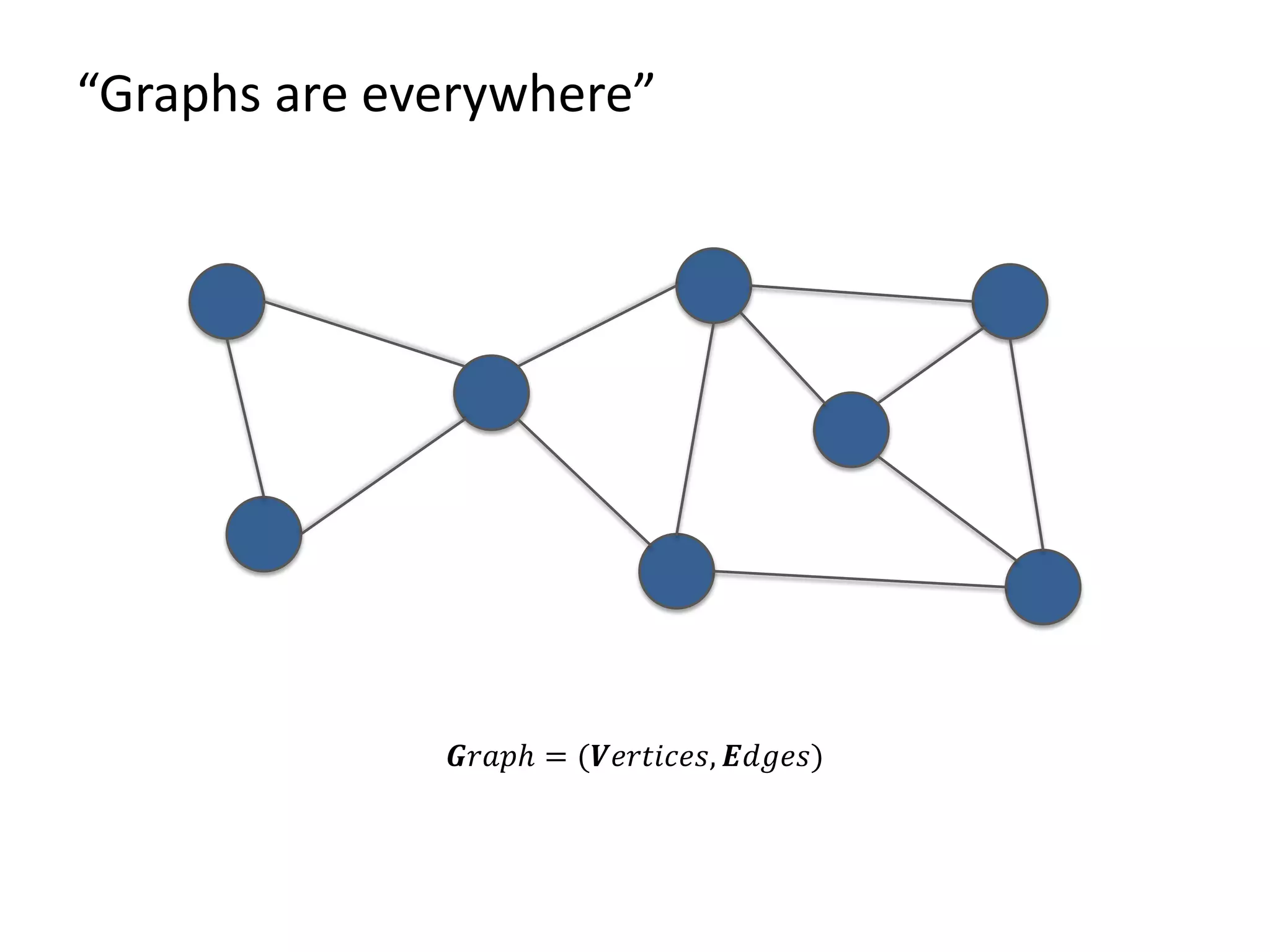
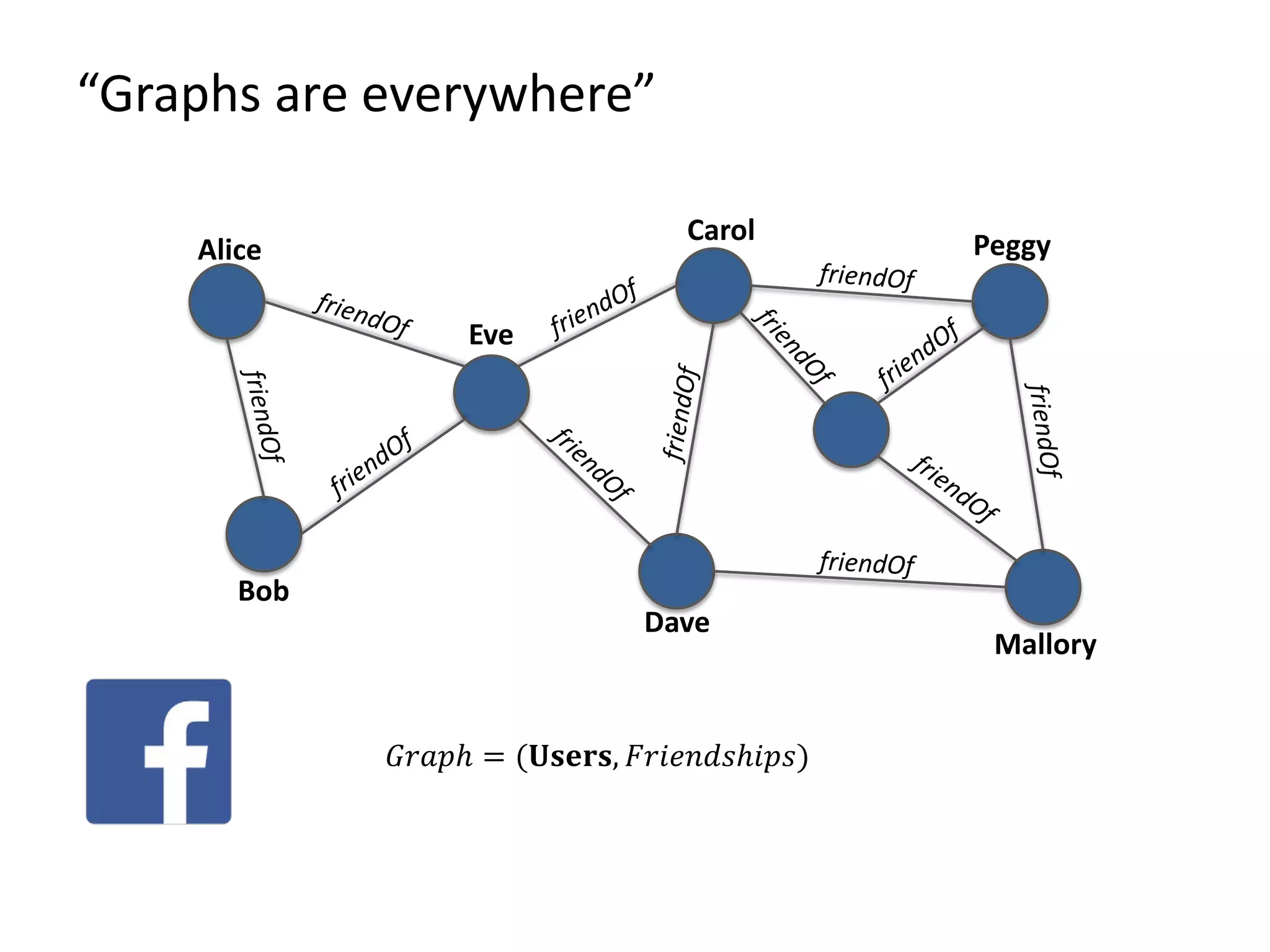
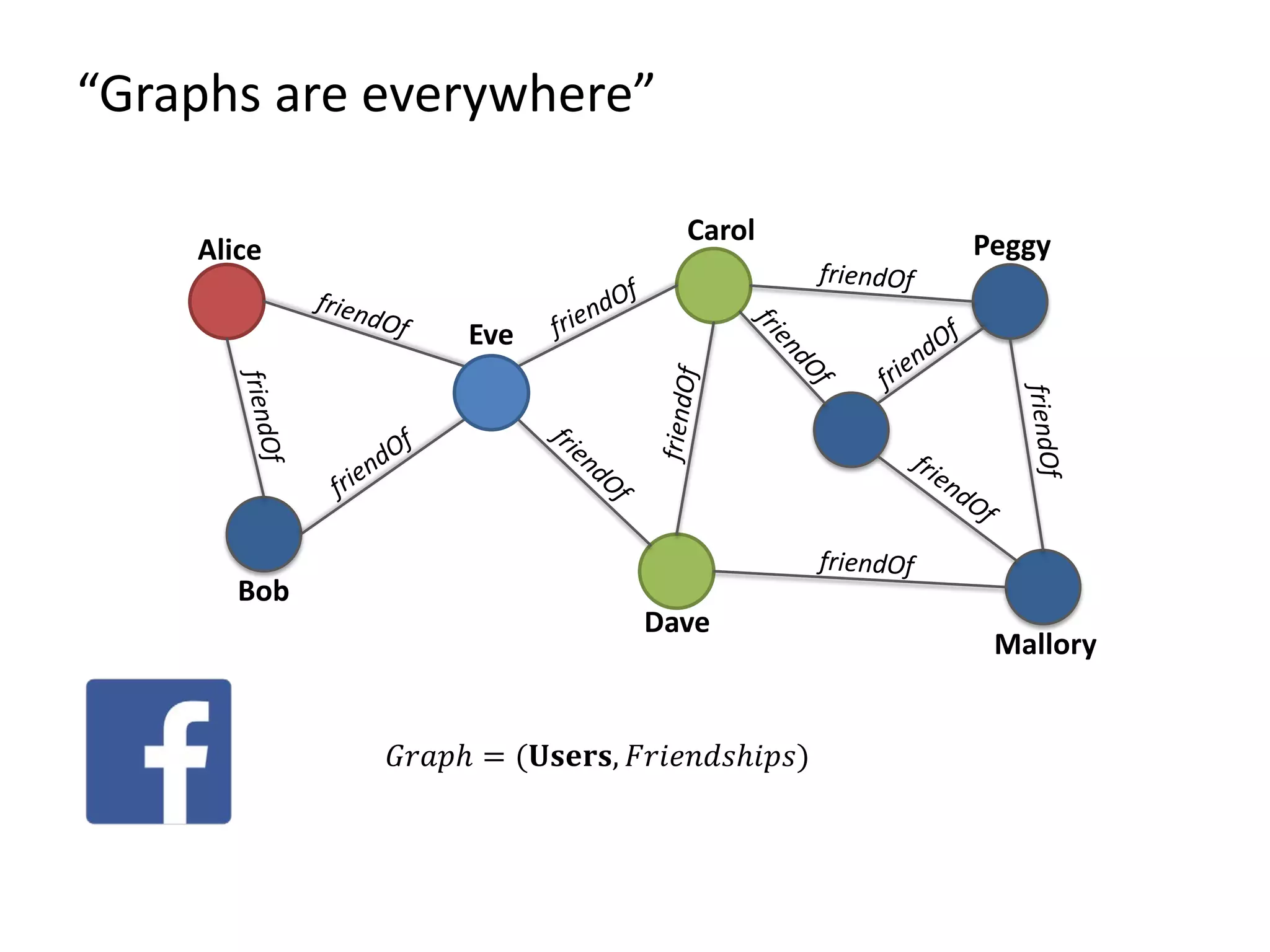
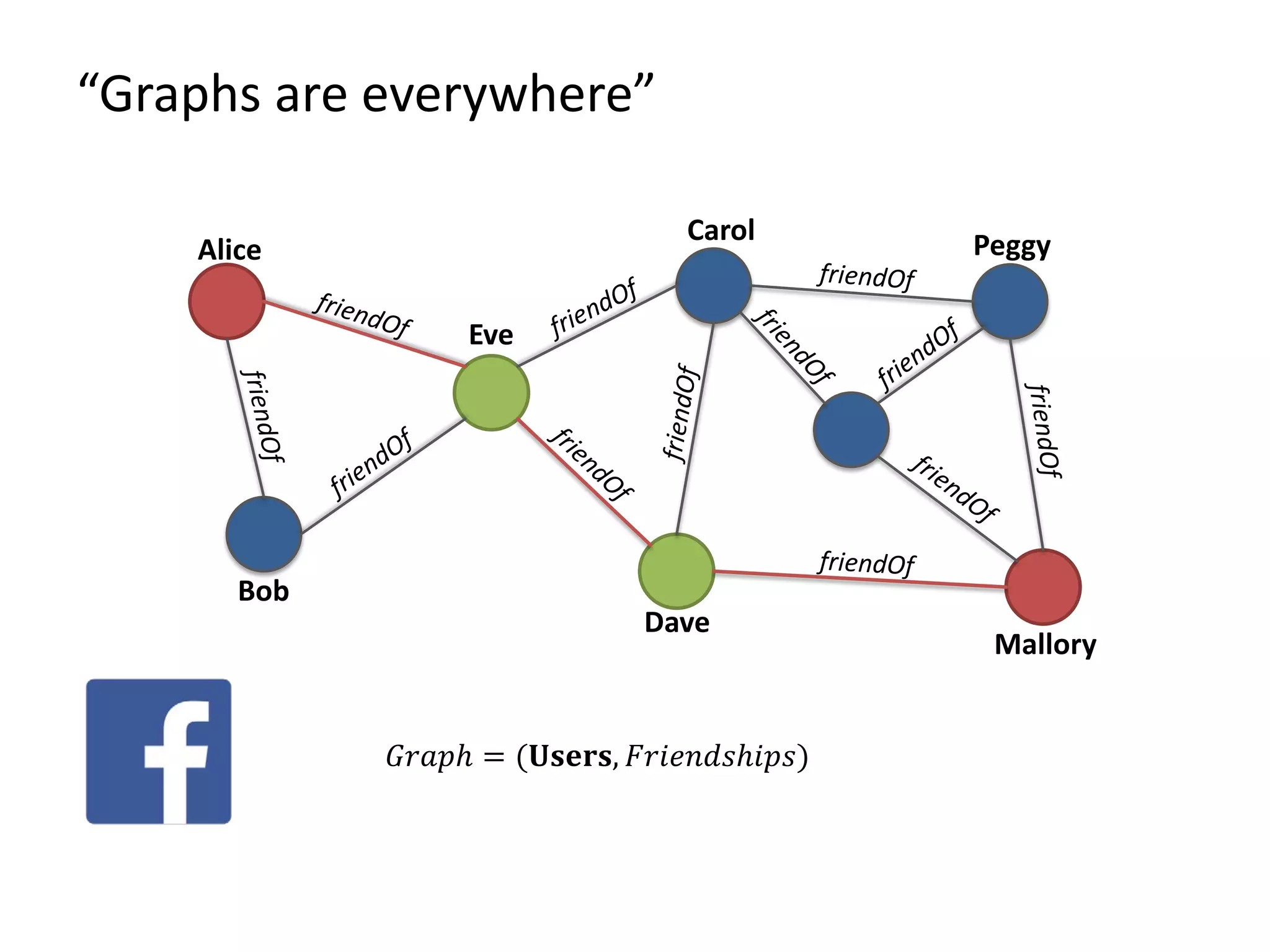
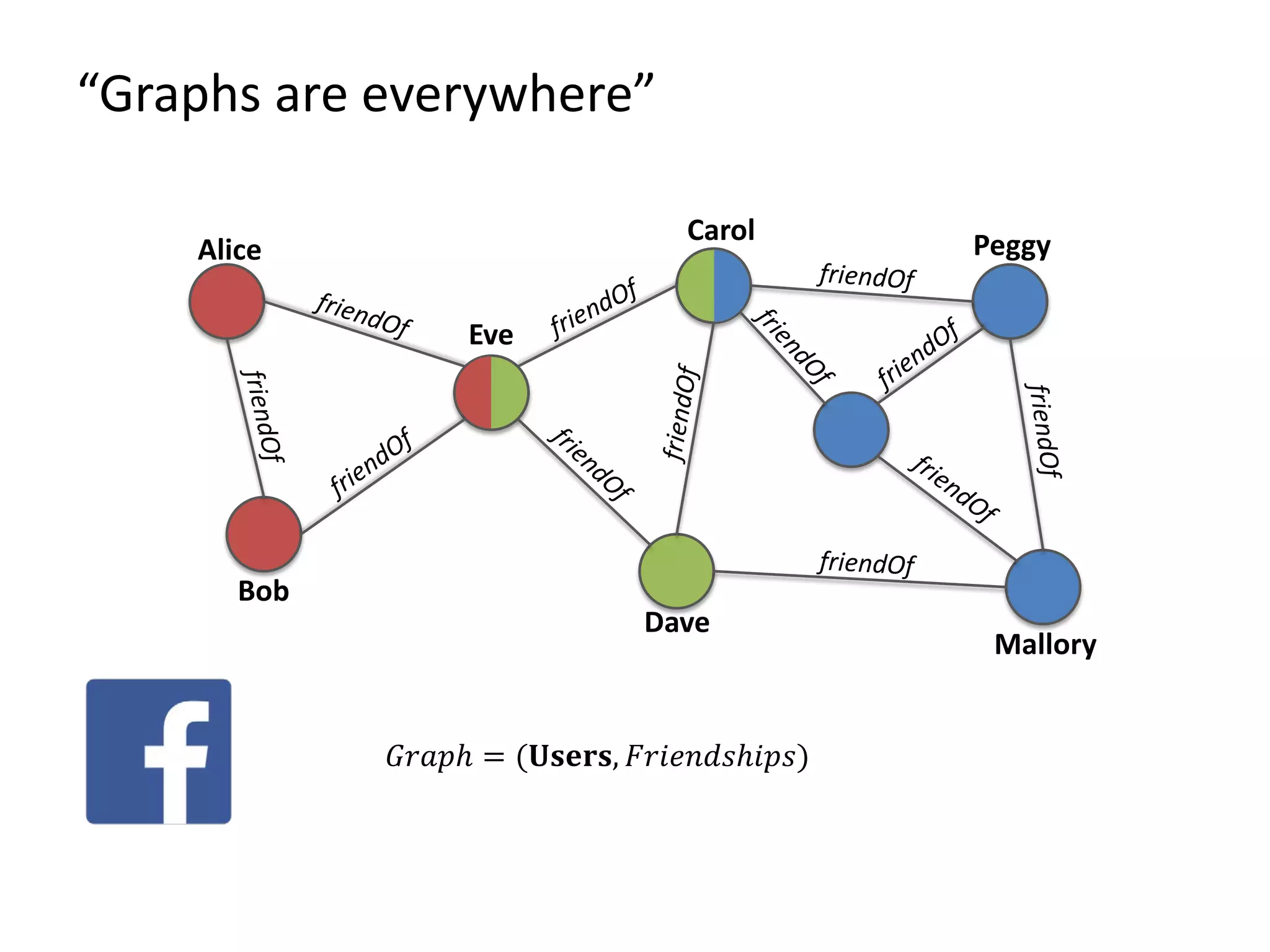
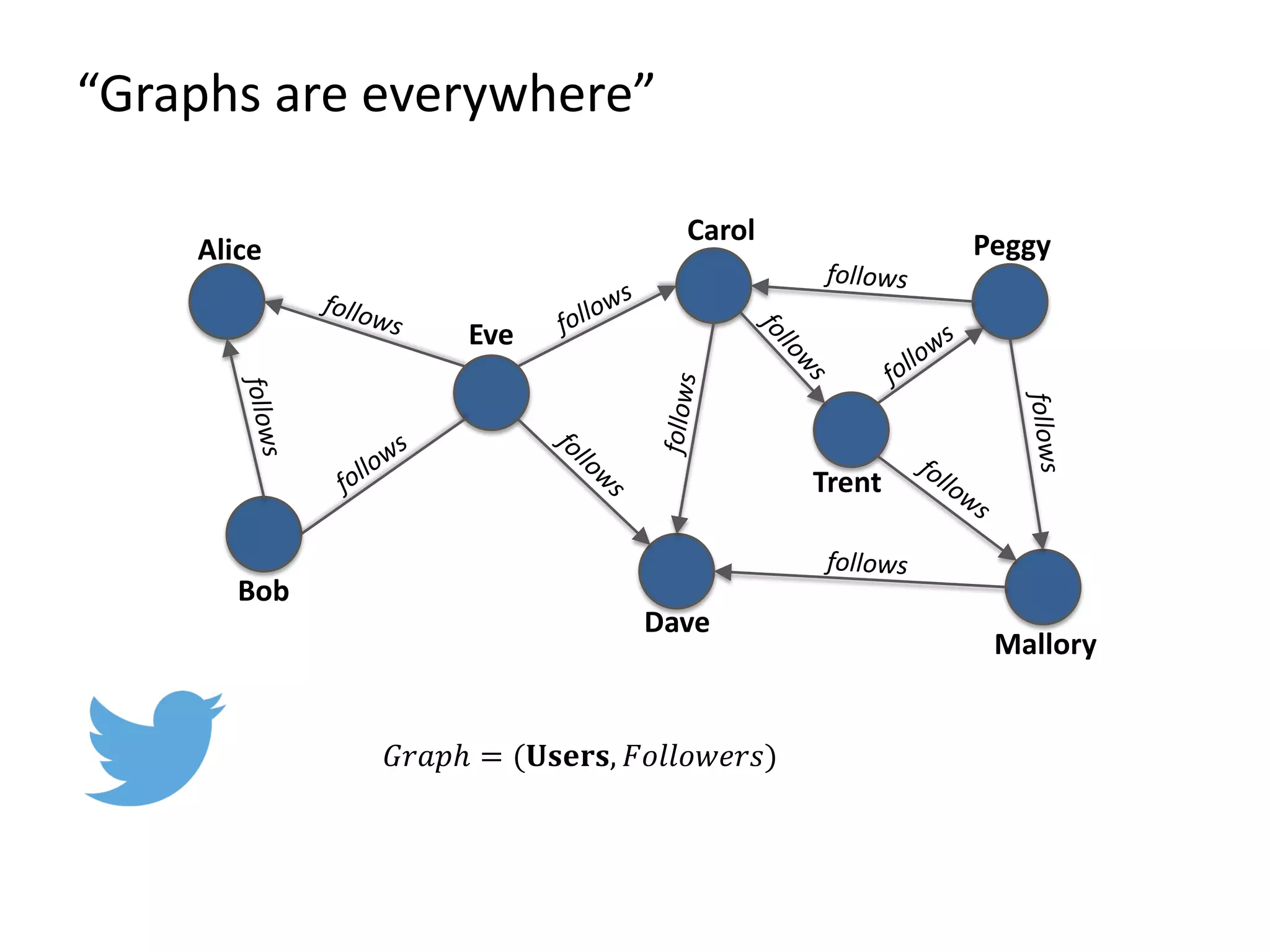
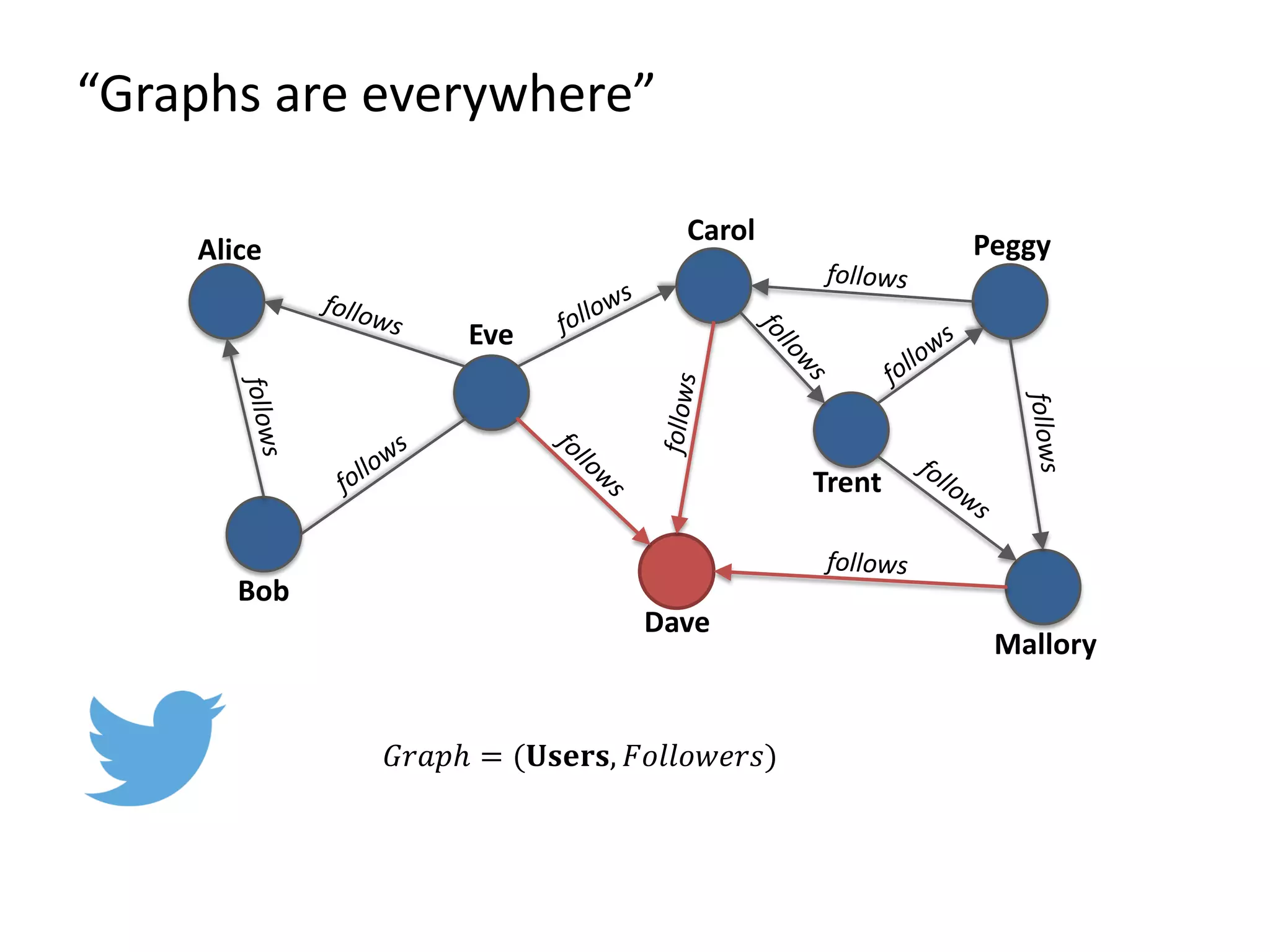
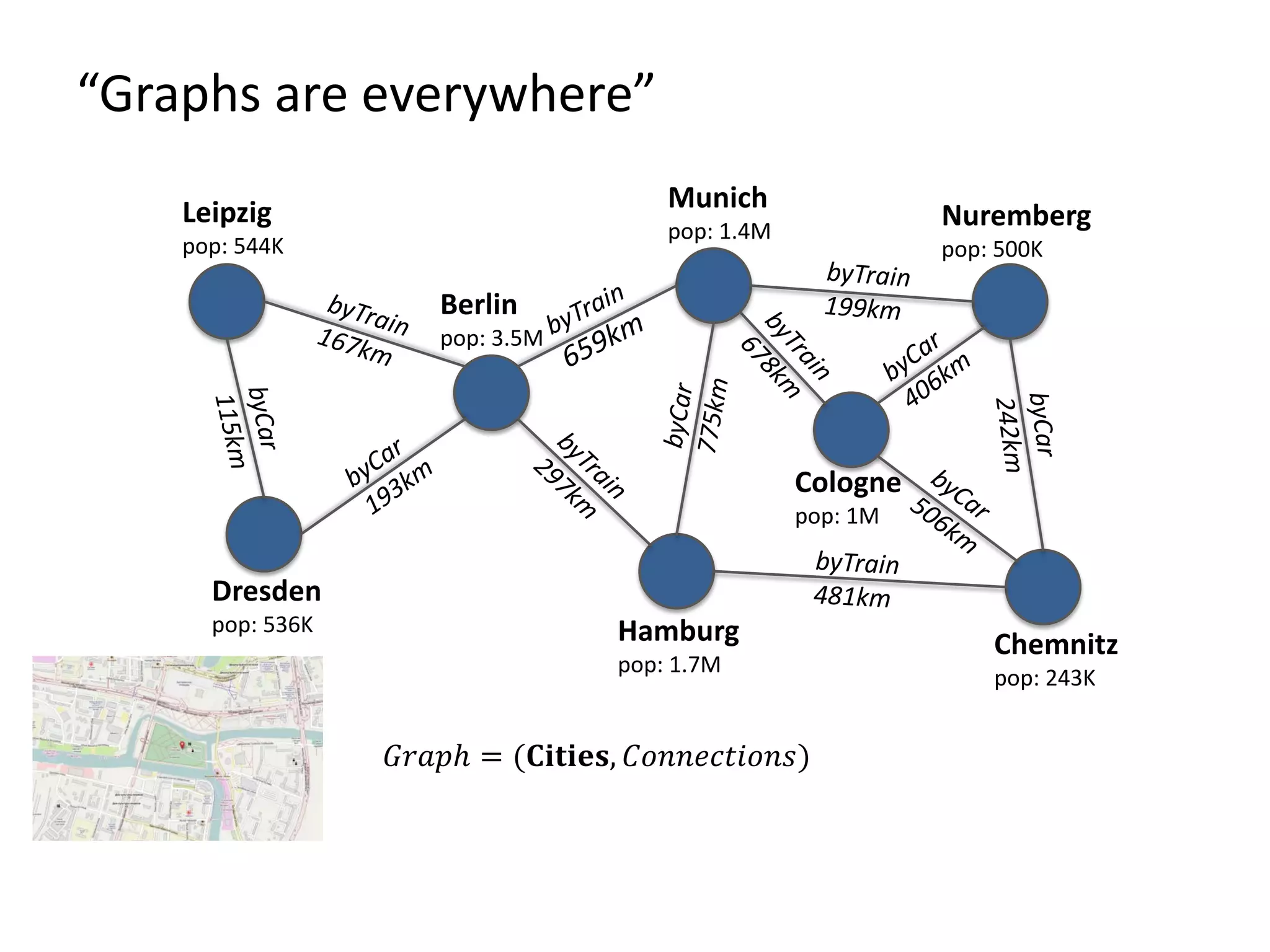
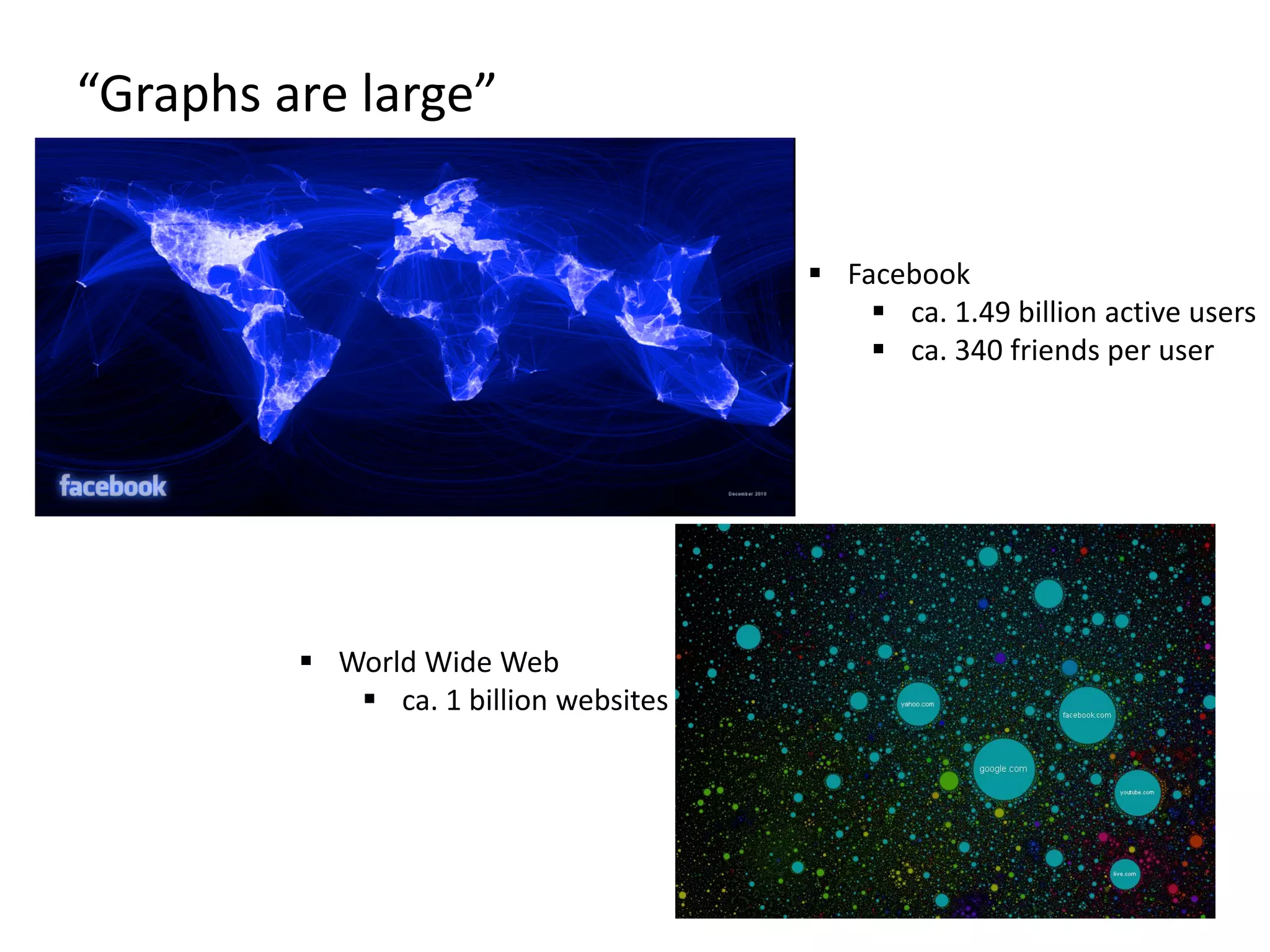
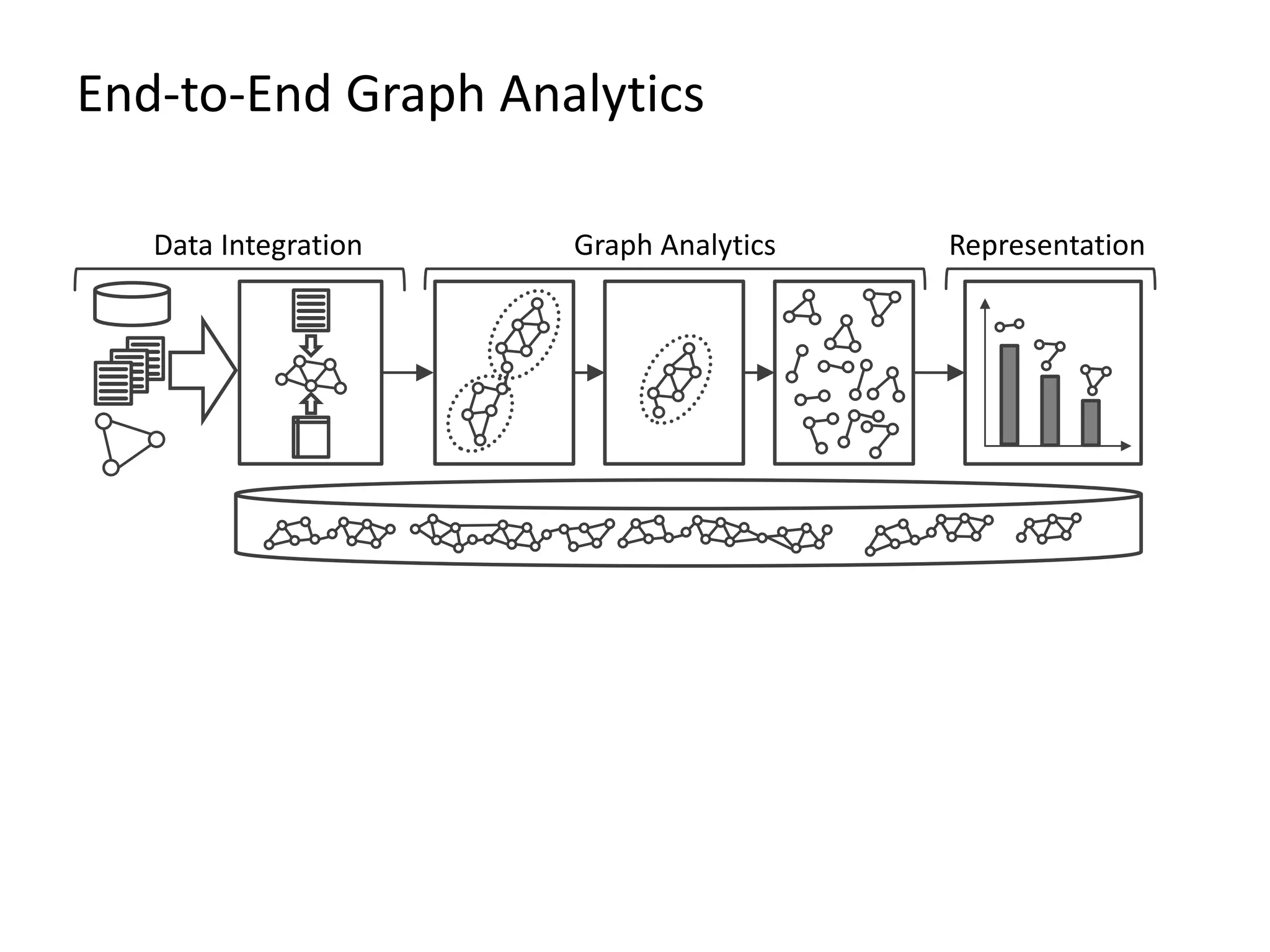
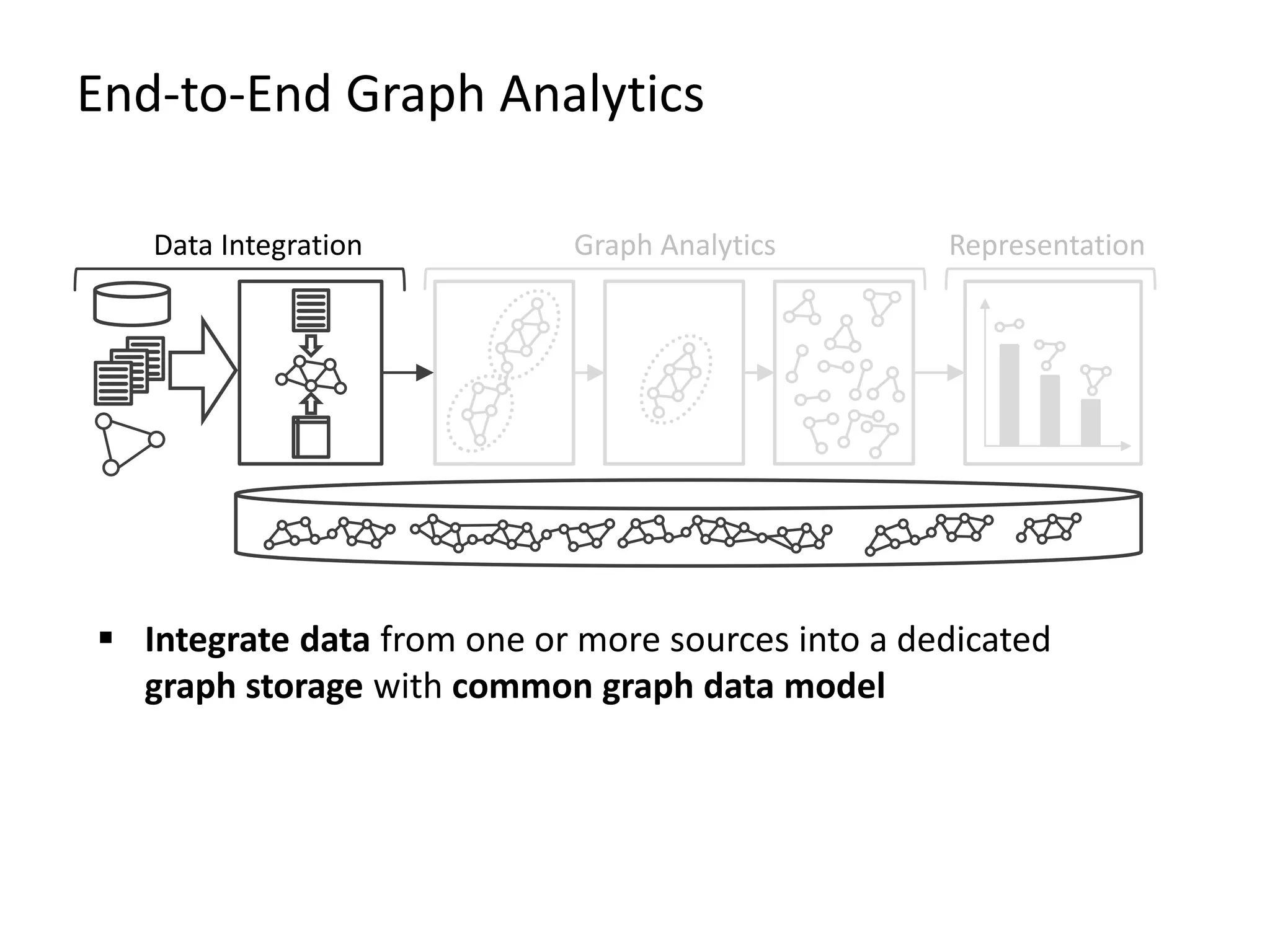
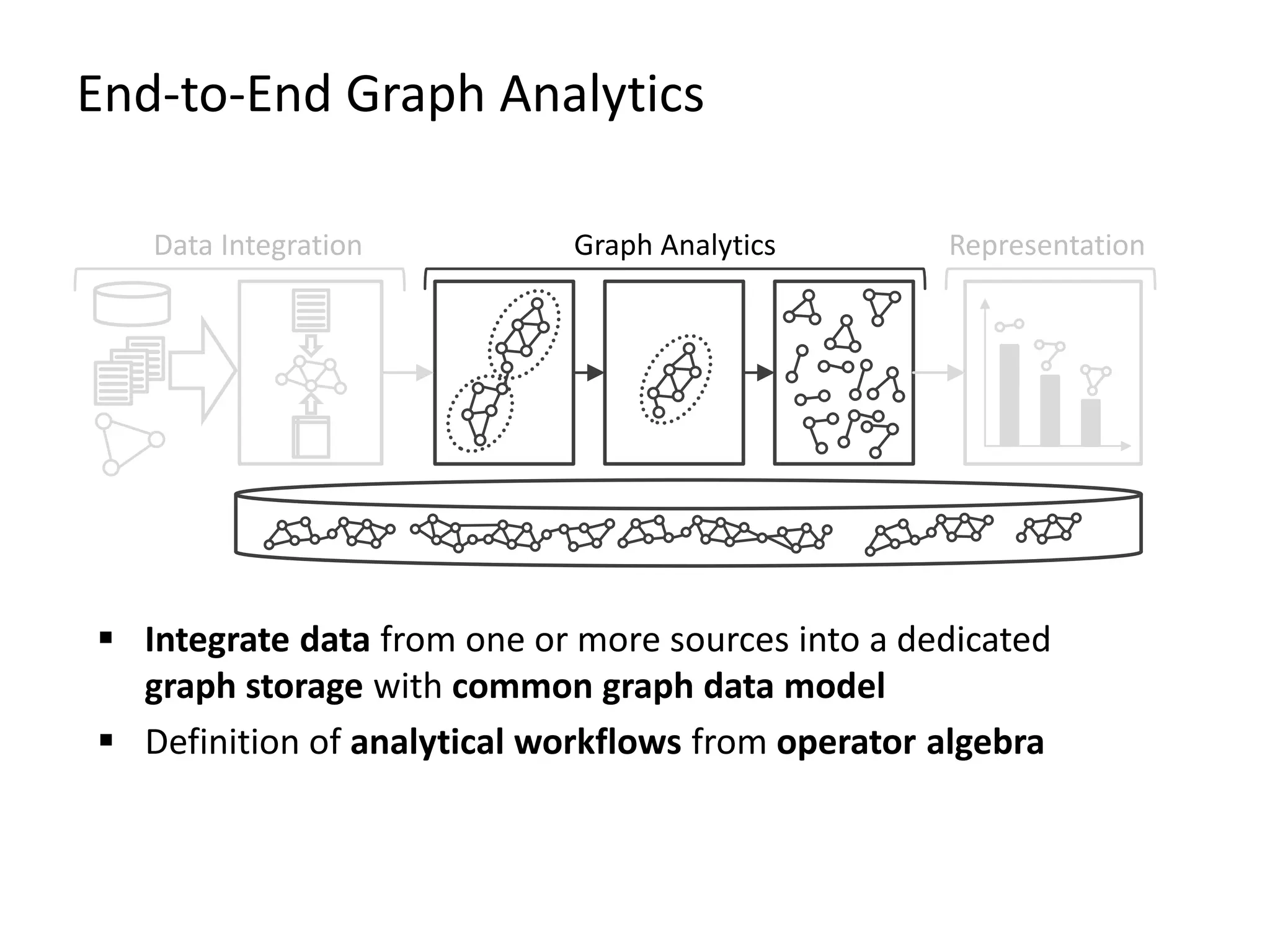
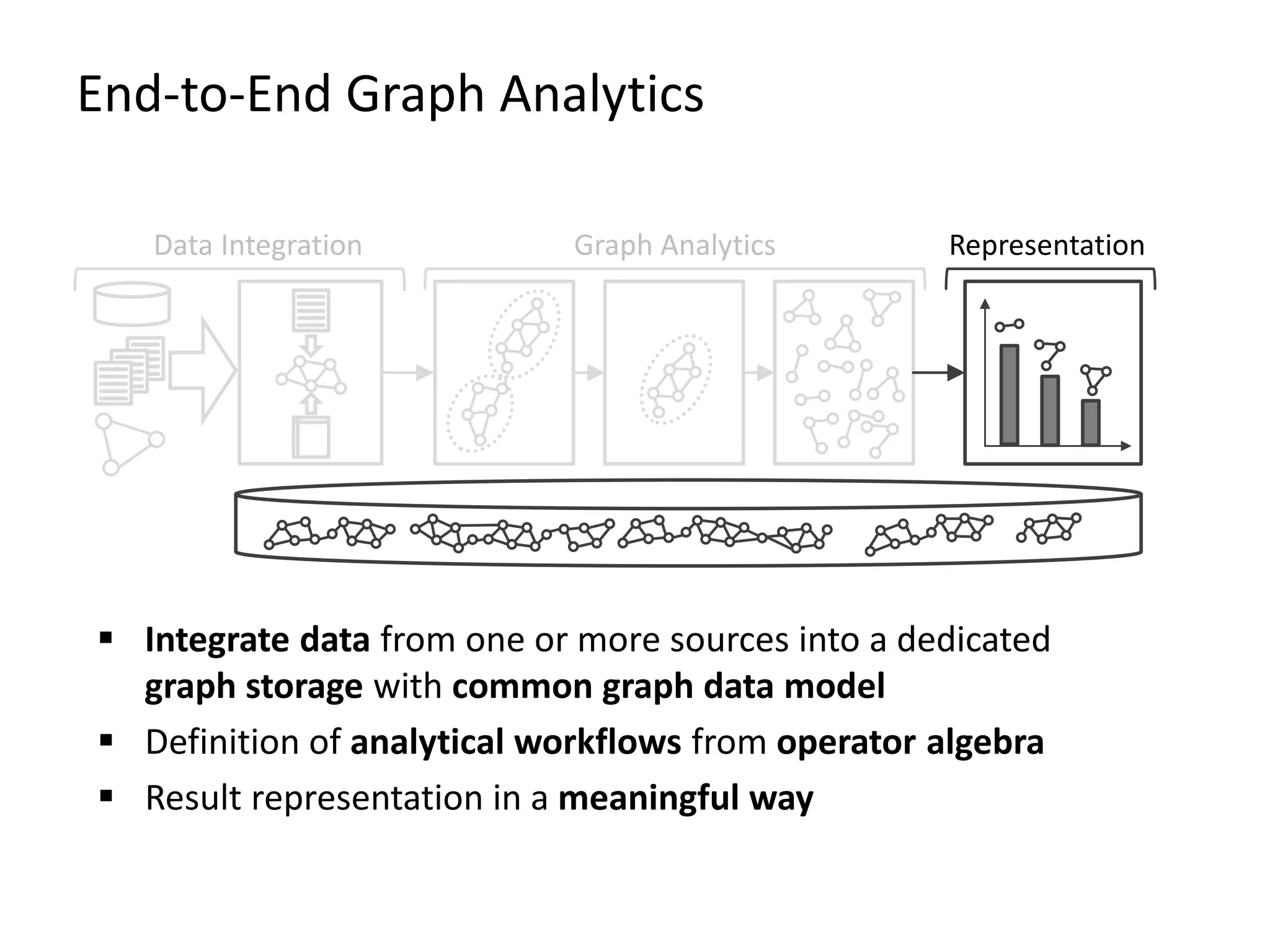
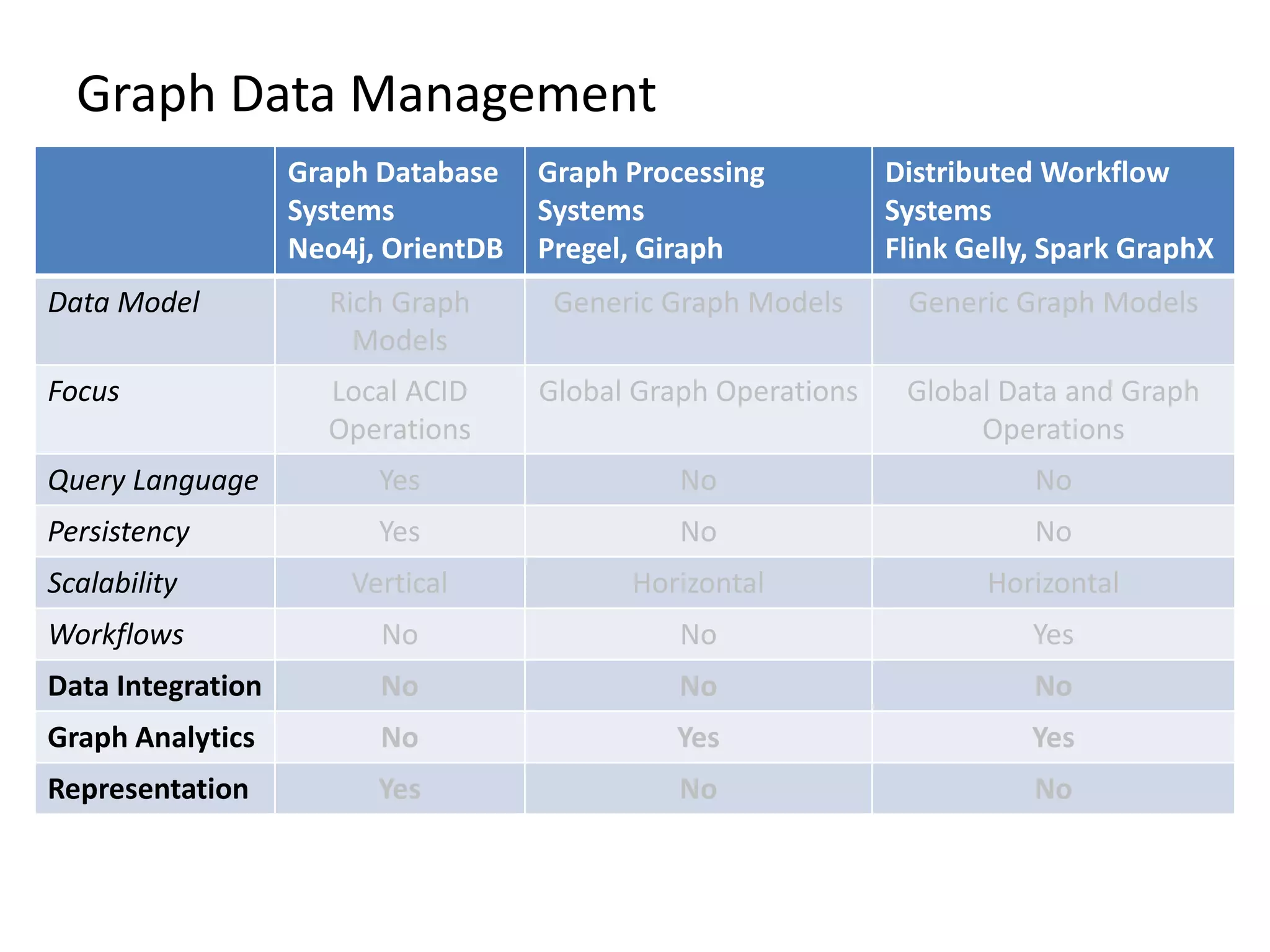
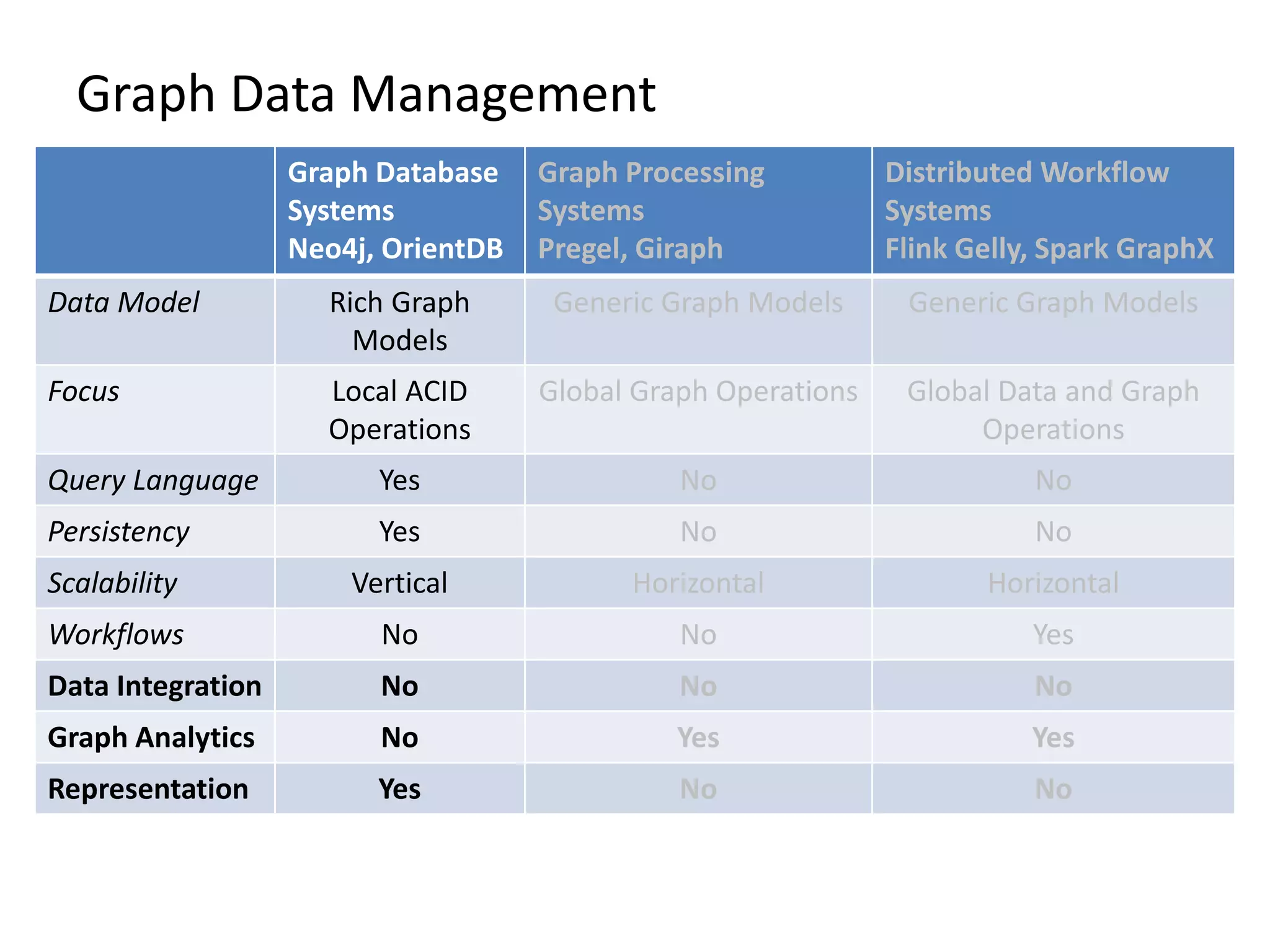
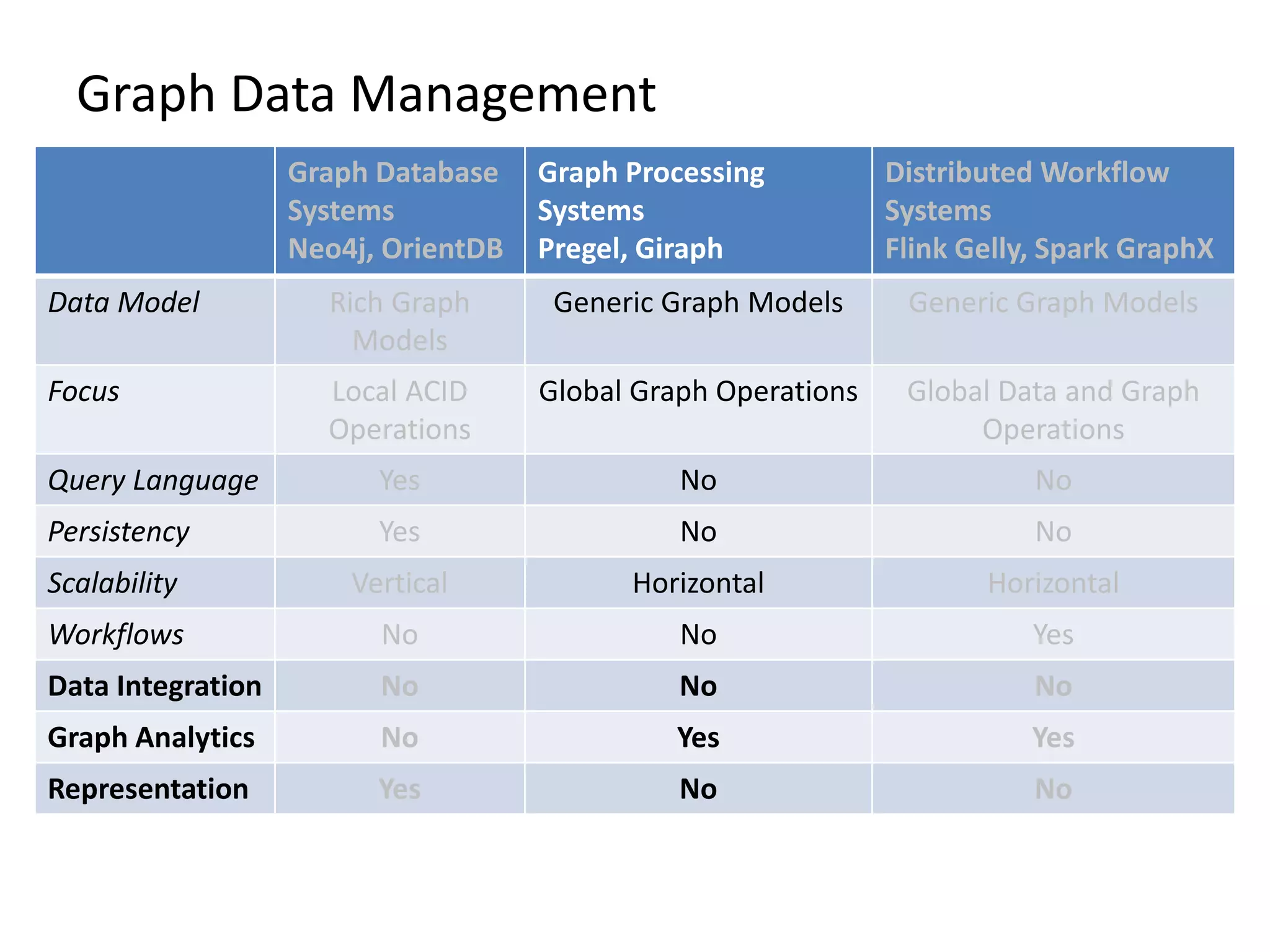
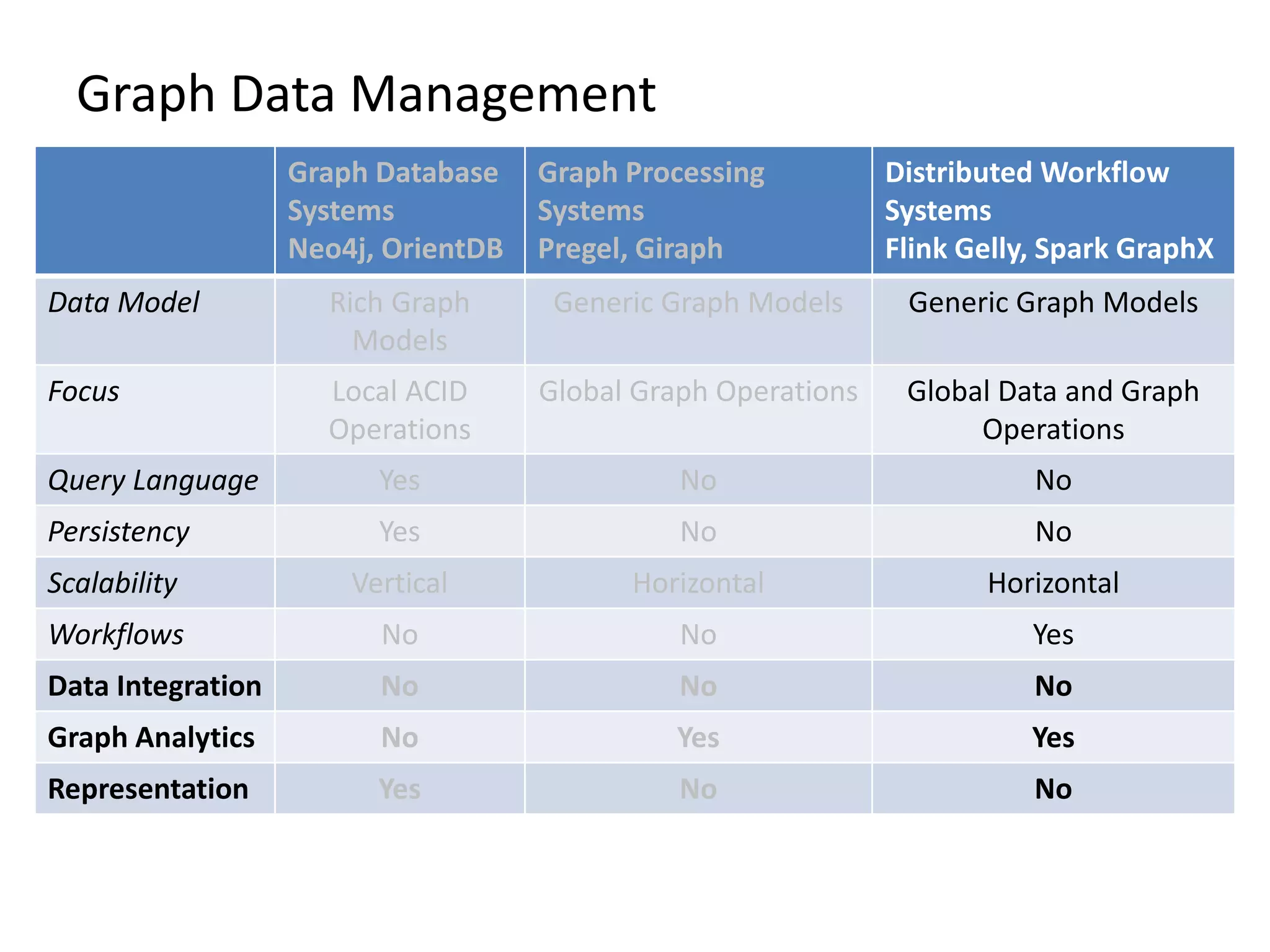
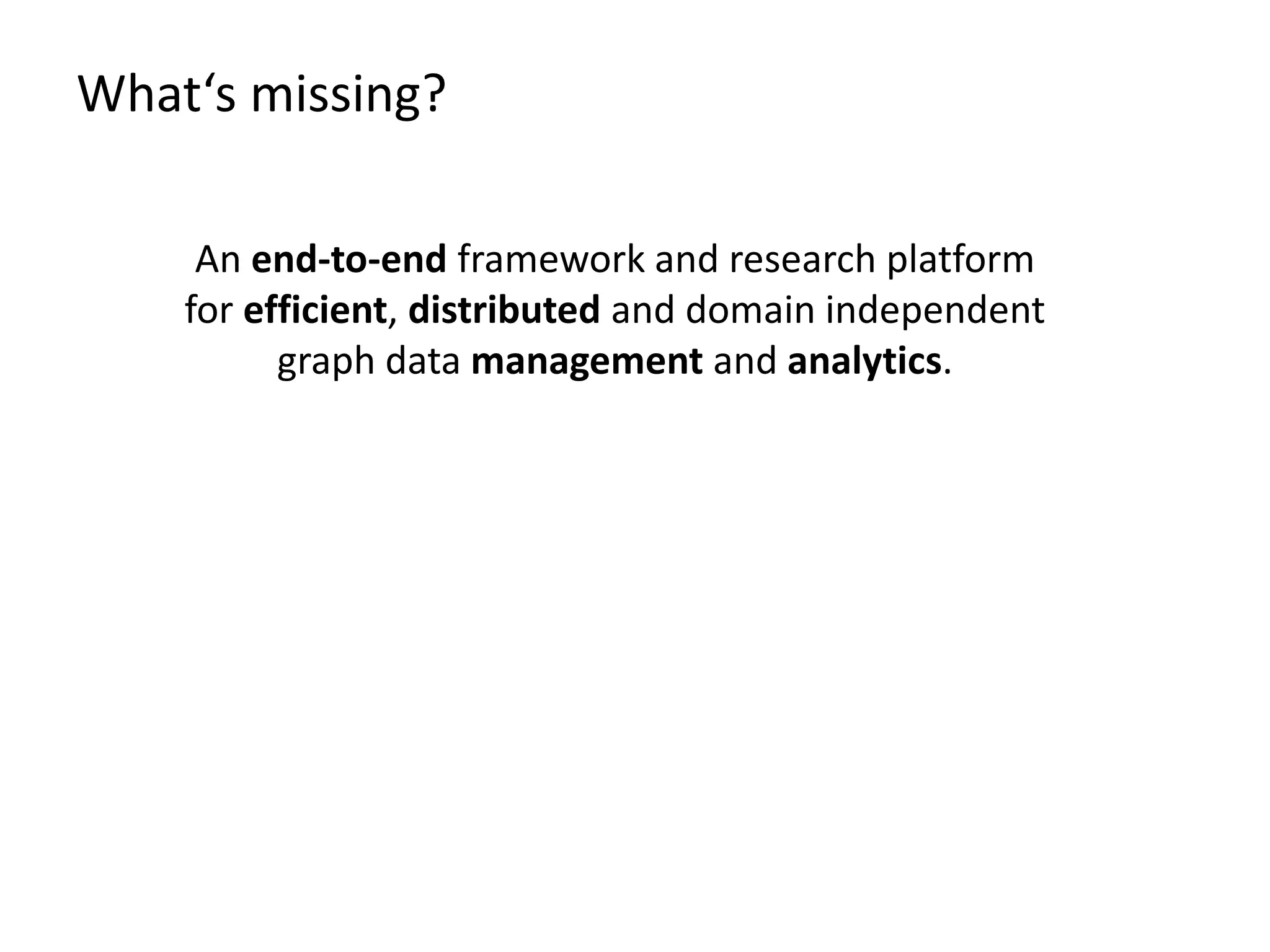
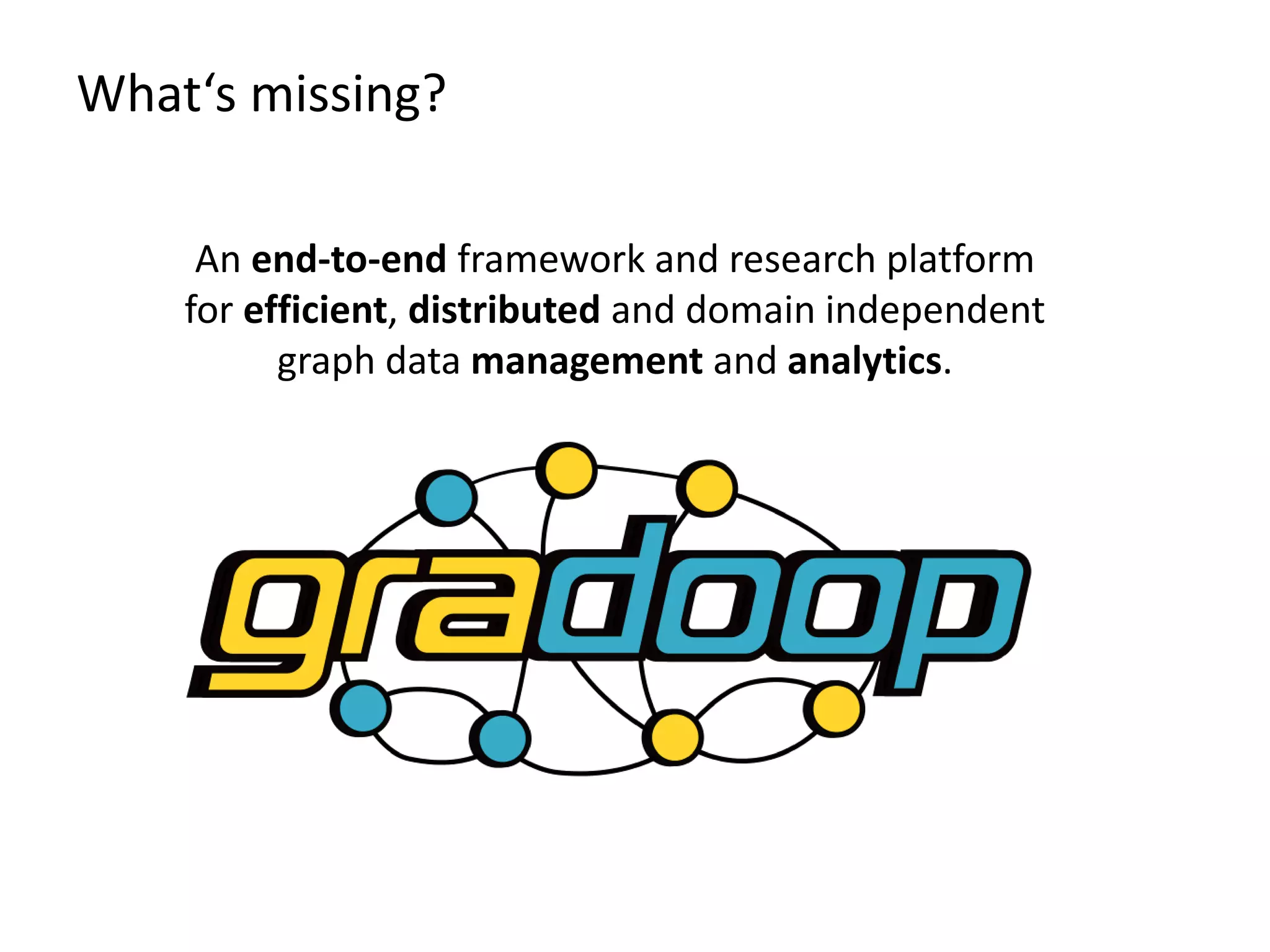
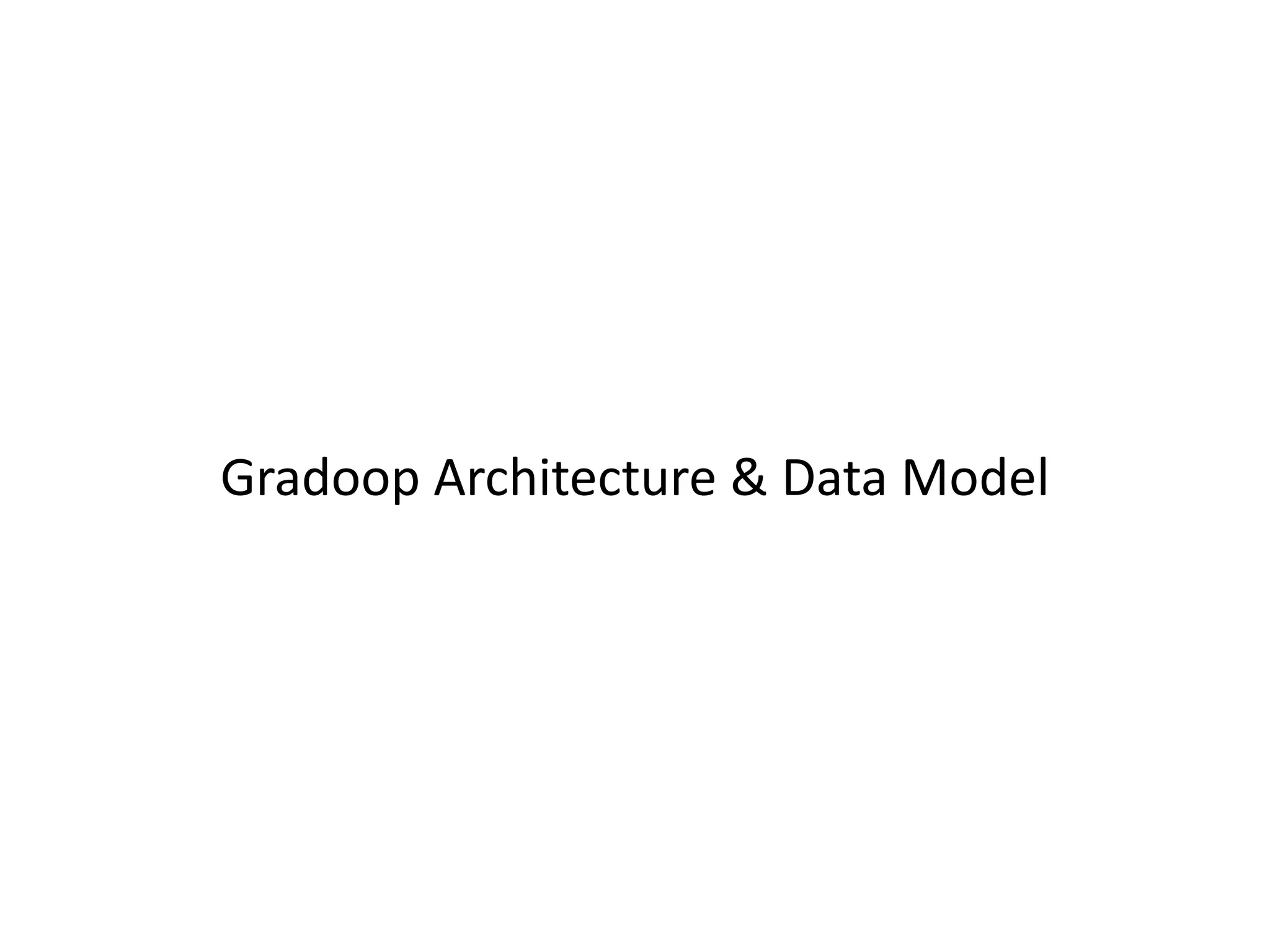
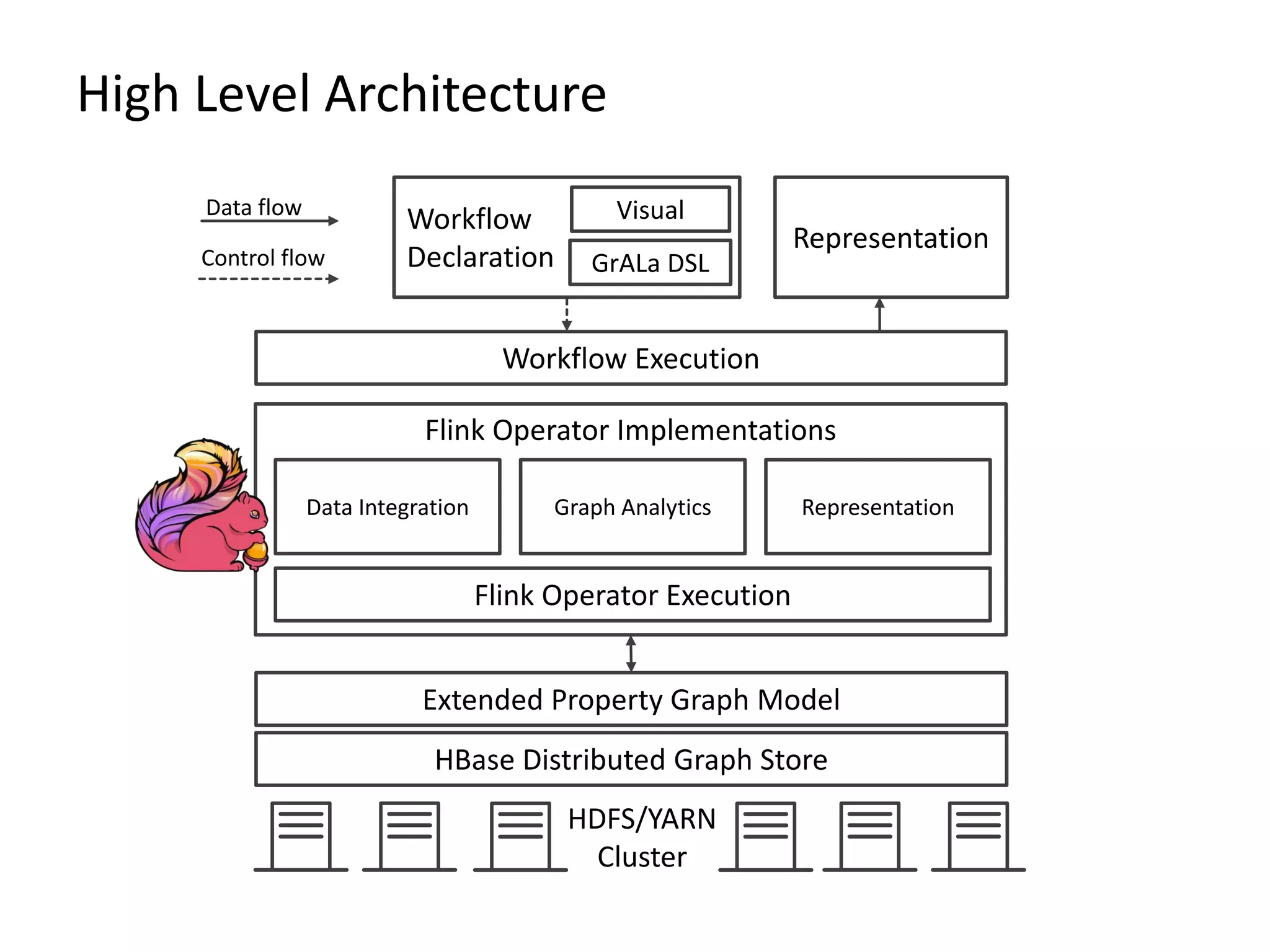
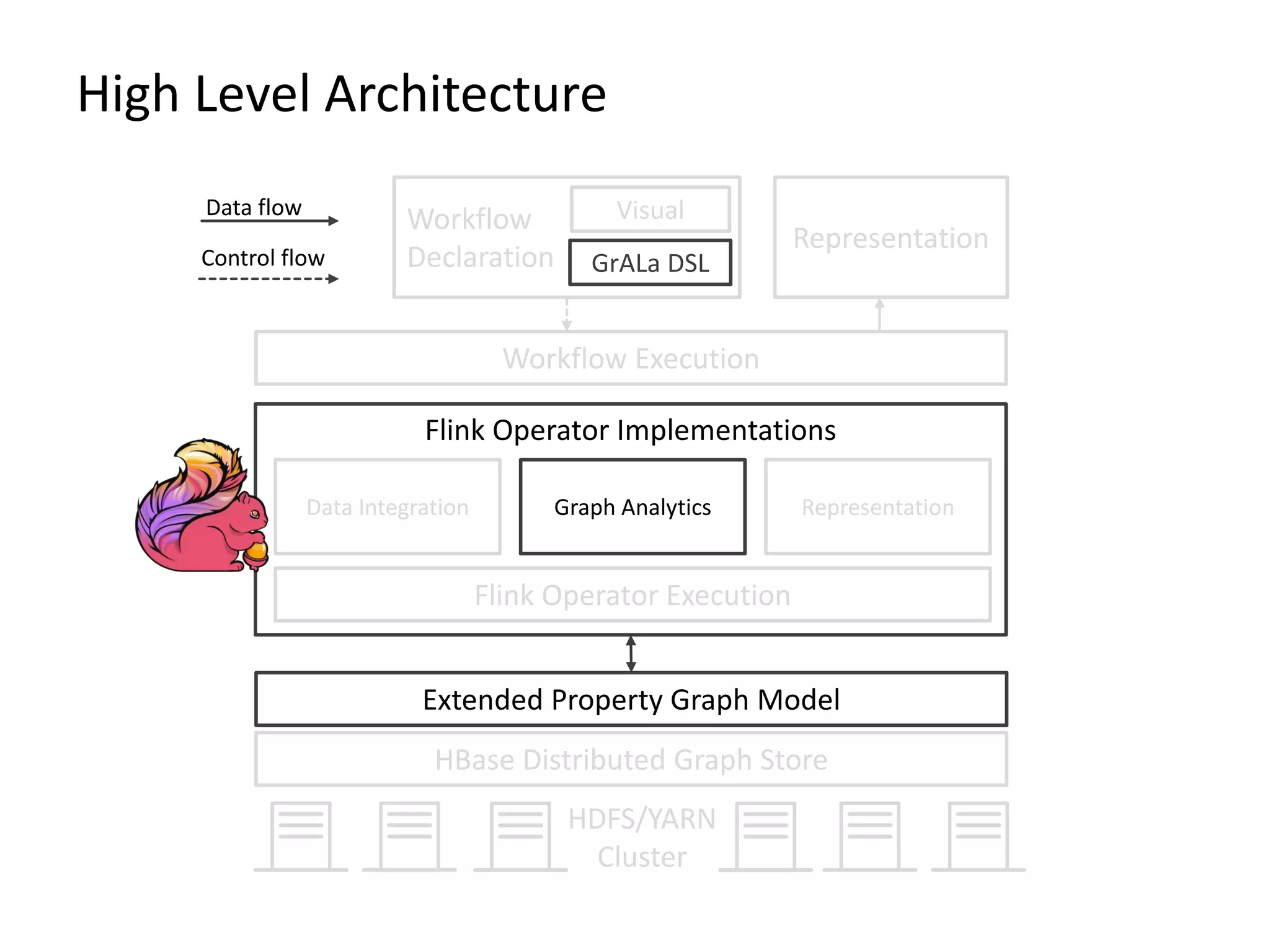
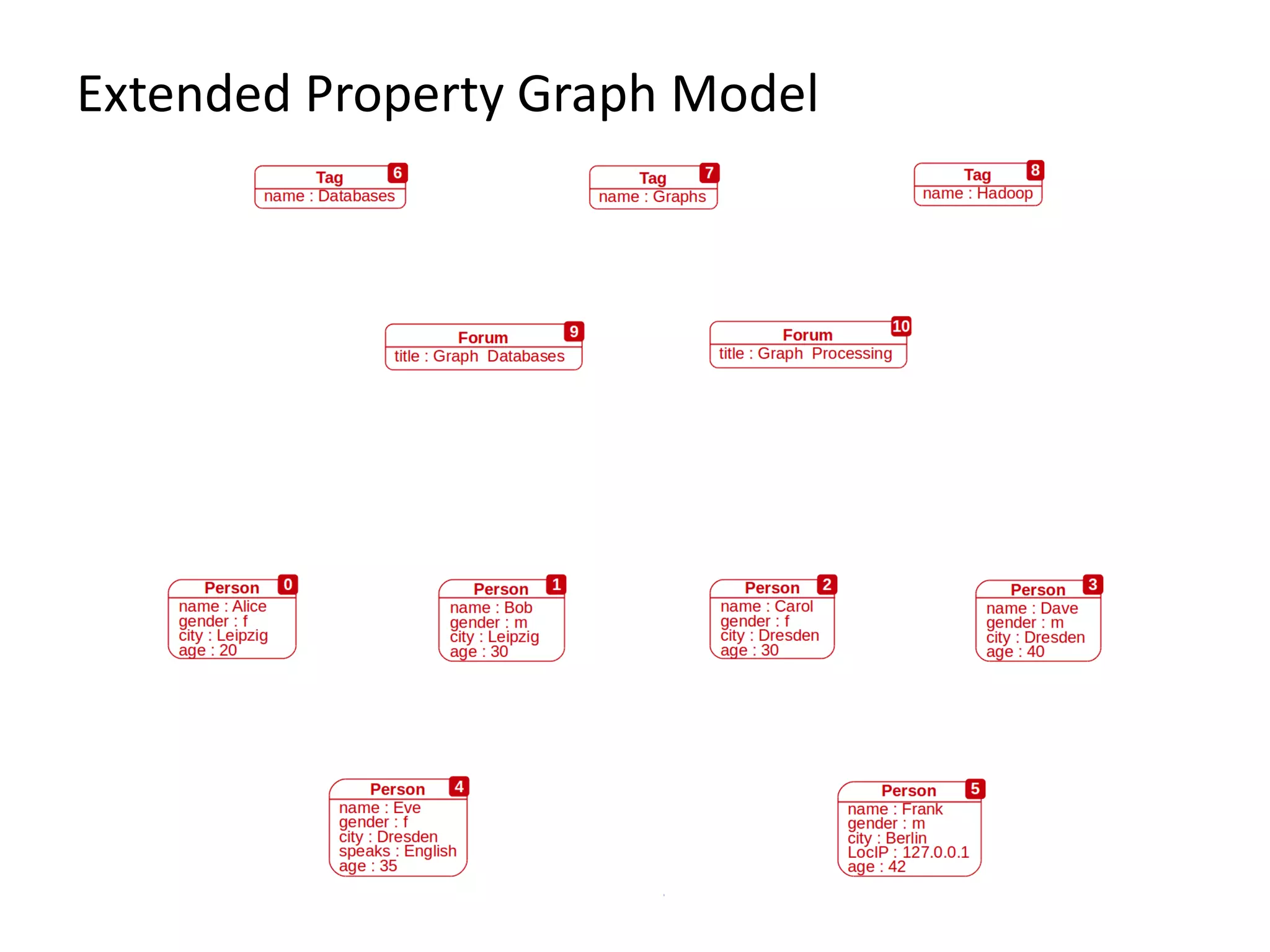
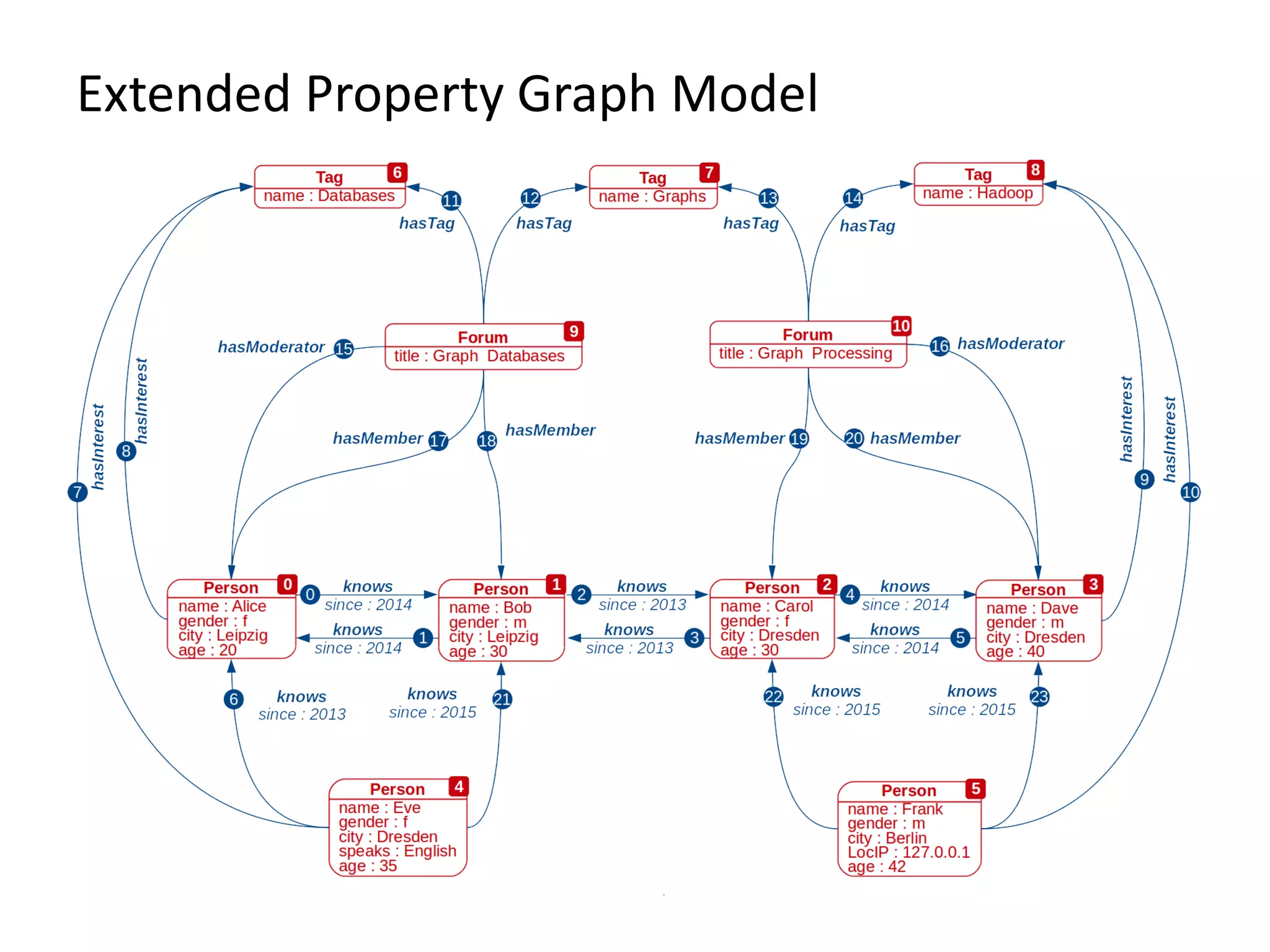
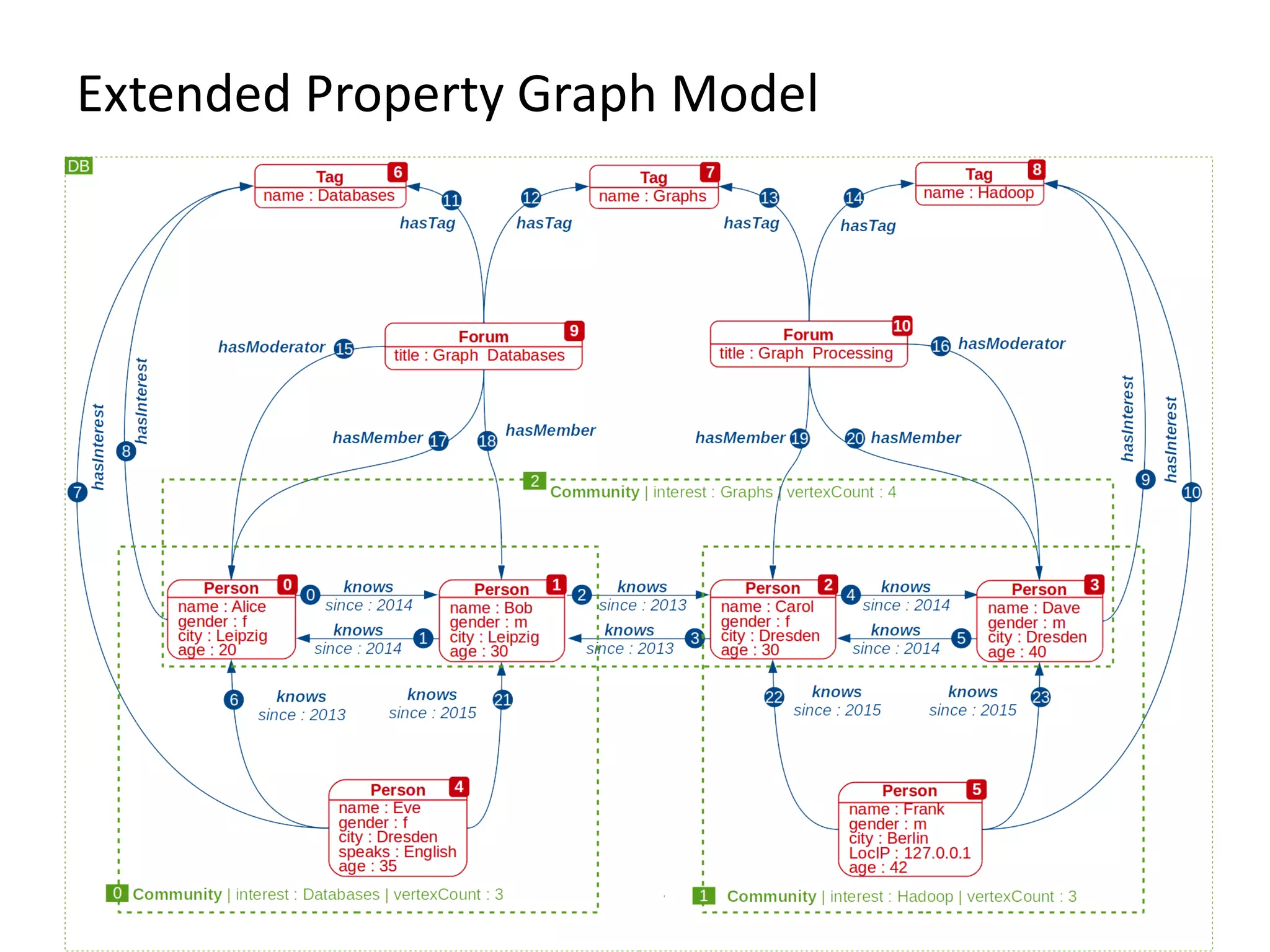
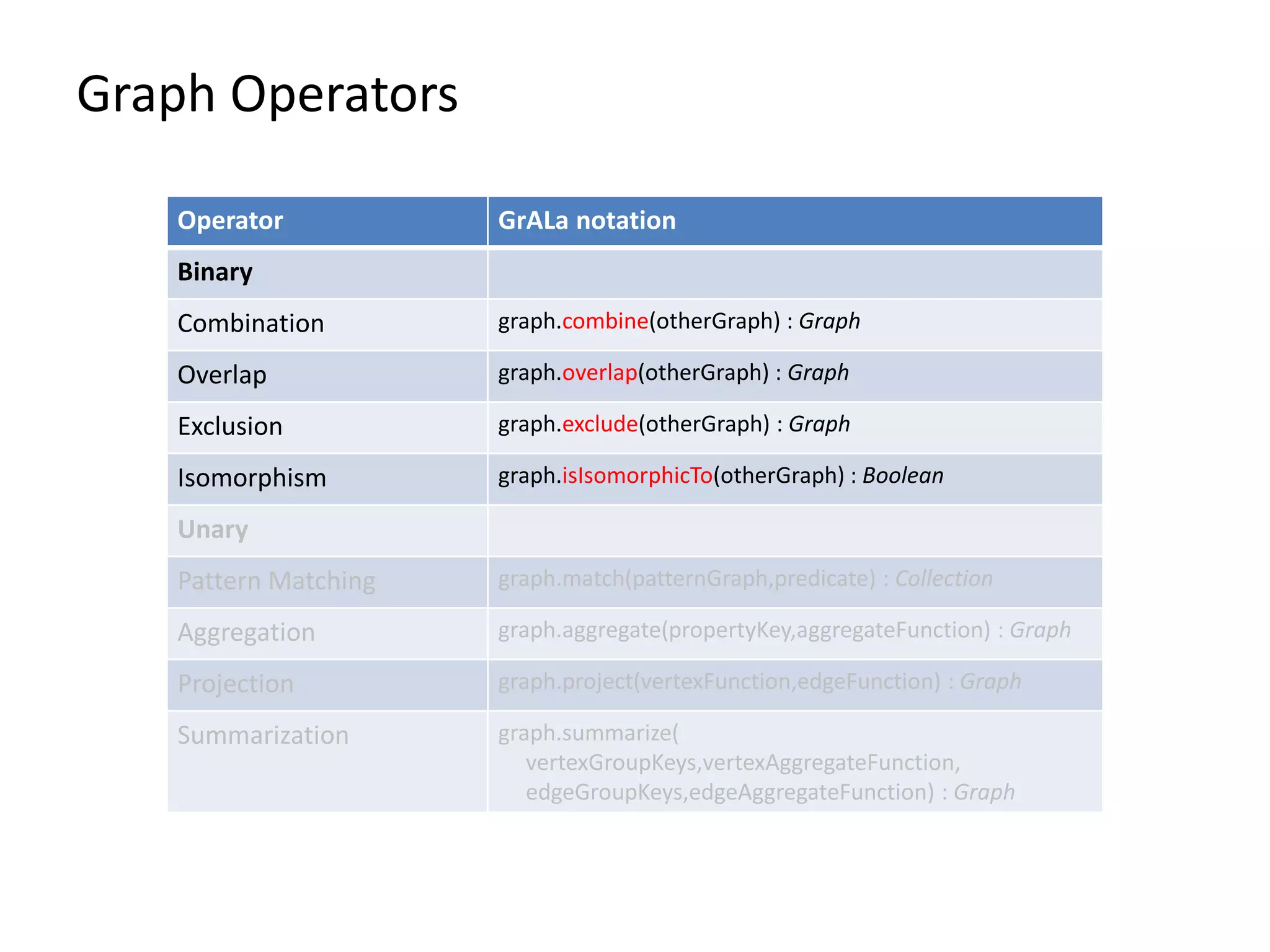
![Combination 1: personGraph = db.G[0].combine(db.G[1]).combine(db.G[2])](https://image.slidesharecdn.com/gradoopflinkforward-151014071436-lva1-app6891/75/Gradoop-Scalable-Graph-Analytics-with-Apache-Flink-Flink-Forward-2015-30-2048.jpg)
![Combination 1: personGraph = db.G[0].combine(db.G[1]).combine(db.G[2])](https://image.slidesharecdn.com/gradoopflinkforward-151014071436-lva1-app6891/75/Gradoop-Scalable-Graph-Analytics-with-Apache-Flink-Flink-Forward-2015-31-2048.jpg)
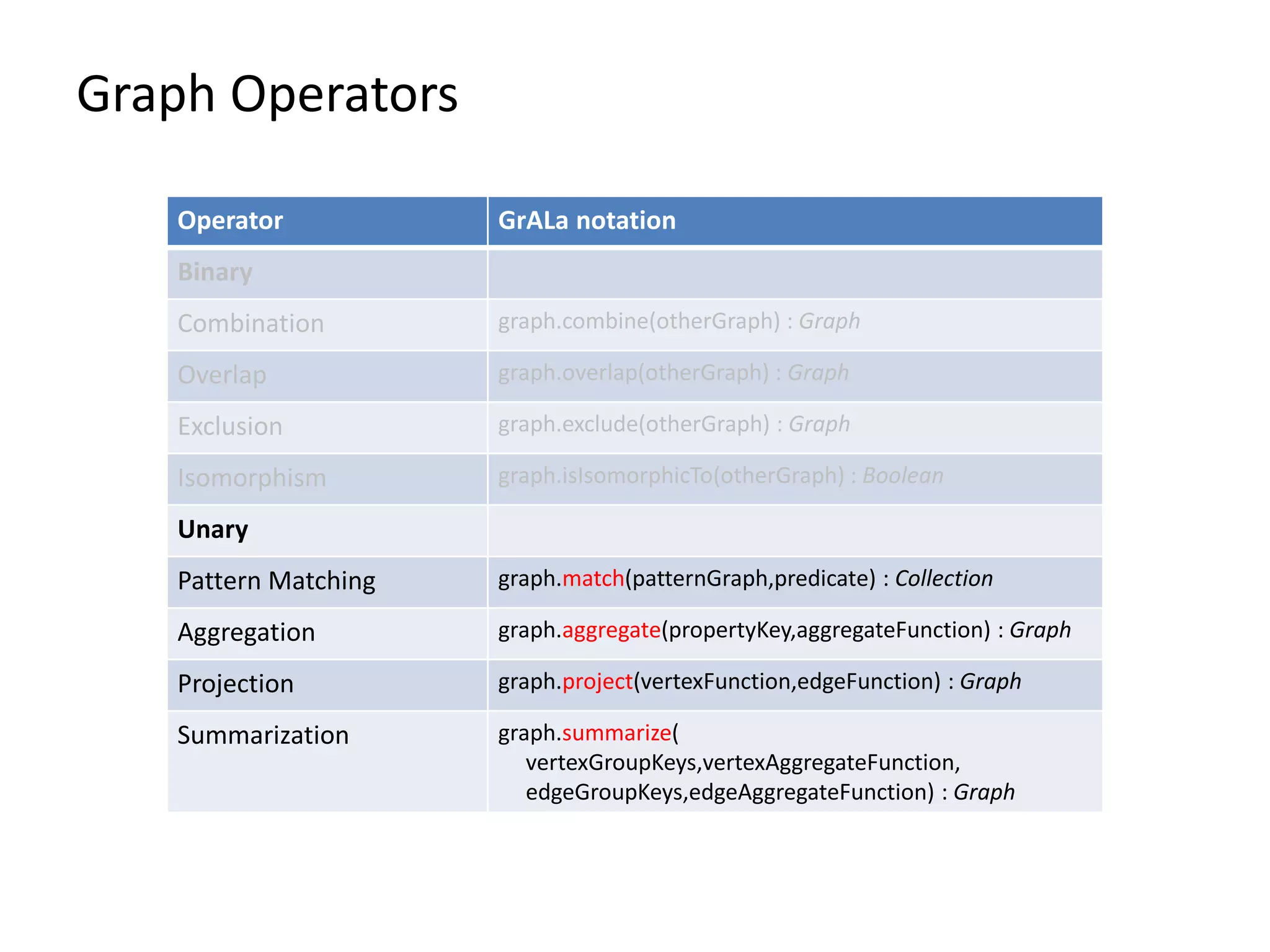
![Summarization 1: personGraph = db.G[0].combine(db.G[1]).combine(db.G[2]) 2: vertexGroupingKeys = {:type, “city”} 3: edgeGroupingKeys = {:type} 4: vertexAggFunc = (Vertex vSum, Set vertices => vSum[“count”] = |vertices|) 5: edgeAggFunc = (Edge eSum, Set edges => eSum[“count”] = |edges|) 6: sumGraph = personGraph.summarize(vertexGroupingKeys, vertexAggFunc, edgeGroupingKeys, edgeAggFunc)](https://image.slidesharecdn.com/gradoopflinkforward-151014071436-lva1-app6891/75/Gradoop-Scalable-Graph-Analytics-with-Apache-Flink-Flink-Forward-2015-33-2048.jpg)
![Summarization 1: personGraph = db.G[0].combine(db.G[1]).combine(db.G[2]) 2: vertexGroupingKeys = {:type, “city”} 3: edgeGroupingKeys = {:type} 4: vertexAggFunc = (Vertex vSum, Set vertices => vSum[“count”] = |vertices|) 5: edgeAggFunc = (Edge eSum, Set edges => eSum[“count”] = |edges|) 6: sumGraph = personGraph.summarize(vertexGroupingKeys, vertexAggFunc, edgeGroupingKeys, edgeAggFunc)](https://image.slidesharecdn.com/gradoopflinkforward-151014071436-lva1-app6891/75/Gradoop-Scalable-Graph-Analytics-with-Apache-Flink-Flink-Forward-2015-34-2048.jpg)
![Graph Collection Operators Operator GrALa notation Collection Selection collection.select(predicate) : Collection Distinct collection.distinct() : Collection Sort by collection.sortBy(key, [:asc|:desc]) : Collection Top collection.top(limit) : Collection Union collection.union(otherCollection) : Collection Intersection collection.intersect(otherCollection) : Collection Difference collection.difference(otherCollection) : Collection Auxiliary Apply collection.apply(unaryGraphOperator) : Collection Reduce collection.reduce(binaryGraphOperator) : Graph Call [graph|collection].callFor[Graph|Collection]( algorithm,parameters) : [Graph|Collection]](https://image.slidesharecdn.com/gradoopflinkforward-151014071436-lva1-app6891/75/Gradoop-Scalable-Graph-Analytics-with-Apache-Flink-Flink-Forward-2015-35-2048.jpg)
![Selection 1: collection = <db.G[0],db.G[1],db.G[2]> 2: predicate = (Graph g => |g.V| > 3) 3: result = collection.select(predicate)](https://image.slidesharecdn.com/gradoopflinkforward-151014071436-lva1-app6891/75/Gradoop-Scalable-Graph-Analytics-with-Apache-Flink-Flink-Forward-2015-36-2048.jpg)
![Selection 1: collection = <db.G[0],db.G[1],db.G[2]> 2: predicate = (Graph g => |g.V| > 3) 3: result = collection.select(predicate)](https://image.slidesharecdn.com/gradoopflinkforward-151014071436-lva1-app6891/75/Gradoop-Scalable-Graph-Analytics-with-Apache-Flink-Flink-Forward-2015-37-2048.jpg)
![Graph Collection Operators Operator GrALa notation Collection Selection collection.select(predicate) : Collection Distinct collection.distinct() : Collection Sort by collection.sortBy(key, [:asc|:desc]) : Collection Top collection.top(limit) : Collection Union collection.union(otherCollection) : Collection Intersection collection.intersect(otherCollection) : Collection Difference collection.difference(otherCollection) : Collection Auxiliary Apply collection.apply(unaryGraphOperator) : Collection Reduce collection.reduce(binaryGraphOperator) : Graph Call [graph|collection].callFor[Graph|Collection]( algorithm,parameters) : [Graph|Collection]](https://image.slidesharecdn.com/gradoopflinkforward-151014071436-lva1-app6891/75/Gradoop-Scalable-Graph-Analytics-with-Apache-Flink-Flink-Forward-2015-38-2048.jpg)
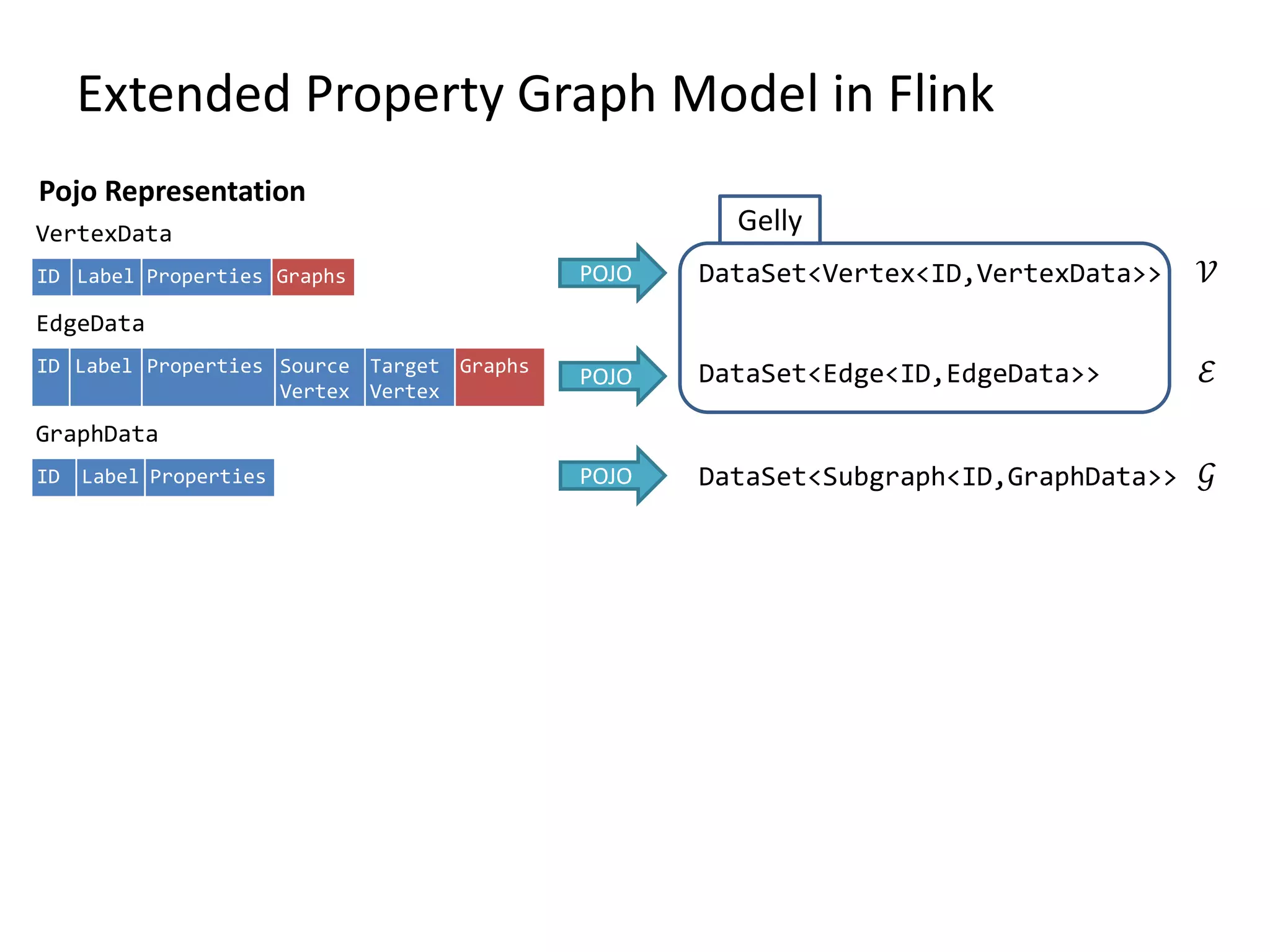
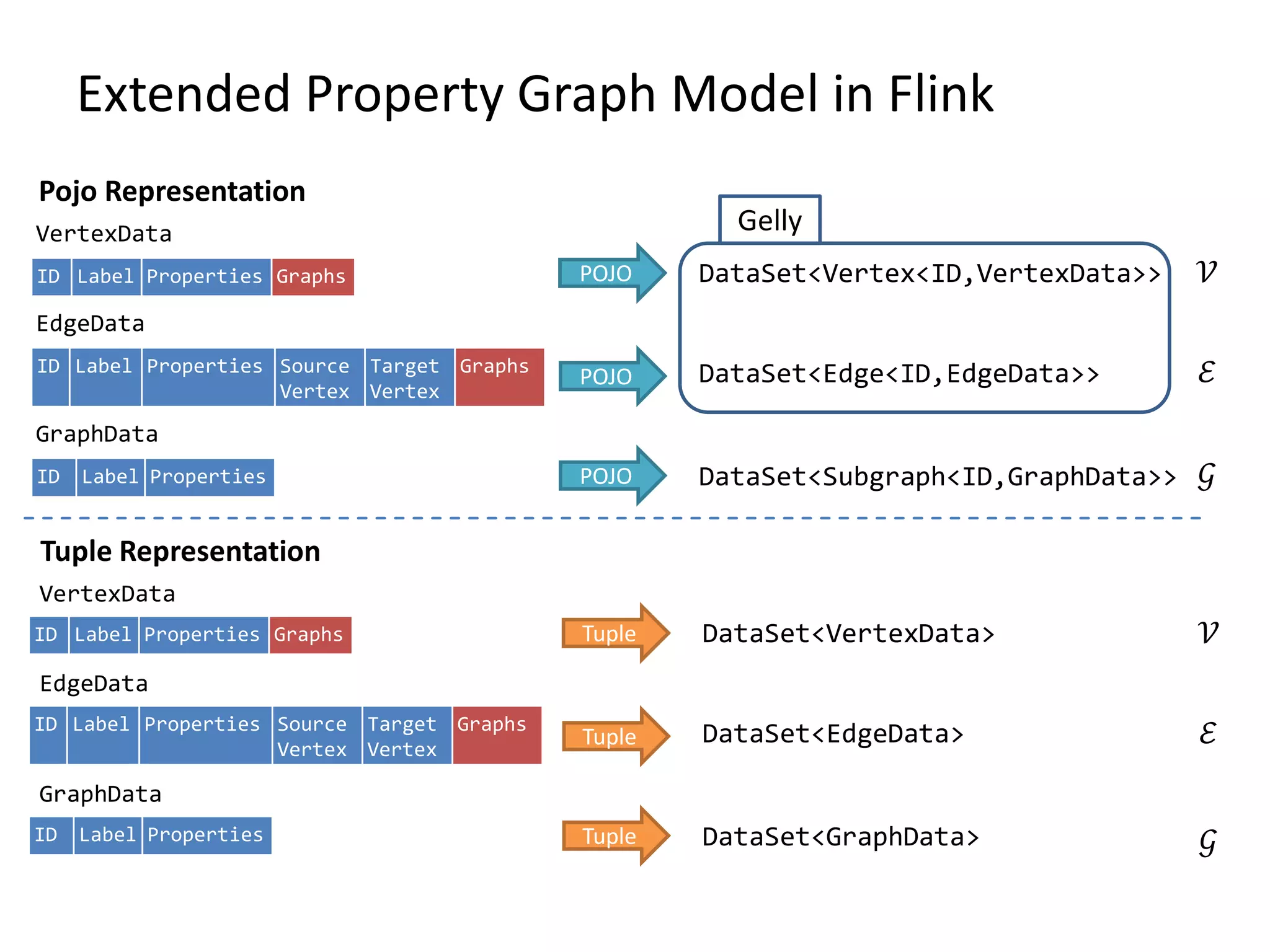
![Summarization in Flink VID City 0 L 1 L 2 D 3 D 4 D 5 B EID S T 0 0 1 1 1 0 2 1 2 3 2 1 4 2 3 5 3 2 6 4 0 7 4 1 8 5 2 9 5 3 L [0,1] D [2,3,4] B [5] VID City Count 0 L 2 2 D 3 5 B 1 VID Rep 0 0 1 0 2 2 3 2 4 2 5 5 ID S T 0 0 1 1 0 0 2 0 2 3 2 1 4 2 3 5 2 2 6 2 0 7 2 1 8 5 2 9 5 3 ID S T 0 0 0 1 0 0 2 0 2 3 2 0 4 2 2 5 2 2 6 2 0 7 2 0 8 5 2 9 5 2 0,0 [0,1] 0,2 [2] 2,0 [3,6,7] 2,2 [4,5] 5,2 [8,9] EID S T Count 0 0 1 2 2 0 2 1 3 2 0 3 4 2 2 2 8 5 2 2 join(VID==S) 𝒱 ℰ’ 𝒱′ ℰ groupBy(City) reduceGroup + filter + map reduceGroup + filter + map groupBy(S,T) join(VID==T)](https://image.slidesharecdn.com/gradoopflinkforward-151014071436-lva1-app6891/75/Gradoop-Scalable-Graph-Analytics-with-Apache-Flink-Flink-Forward-2015-41-2048.jpg)
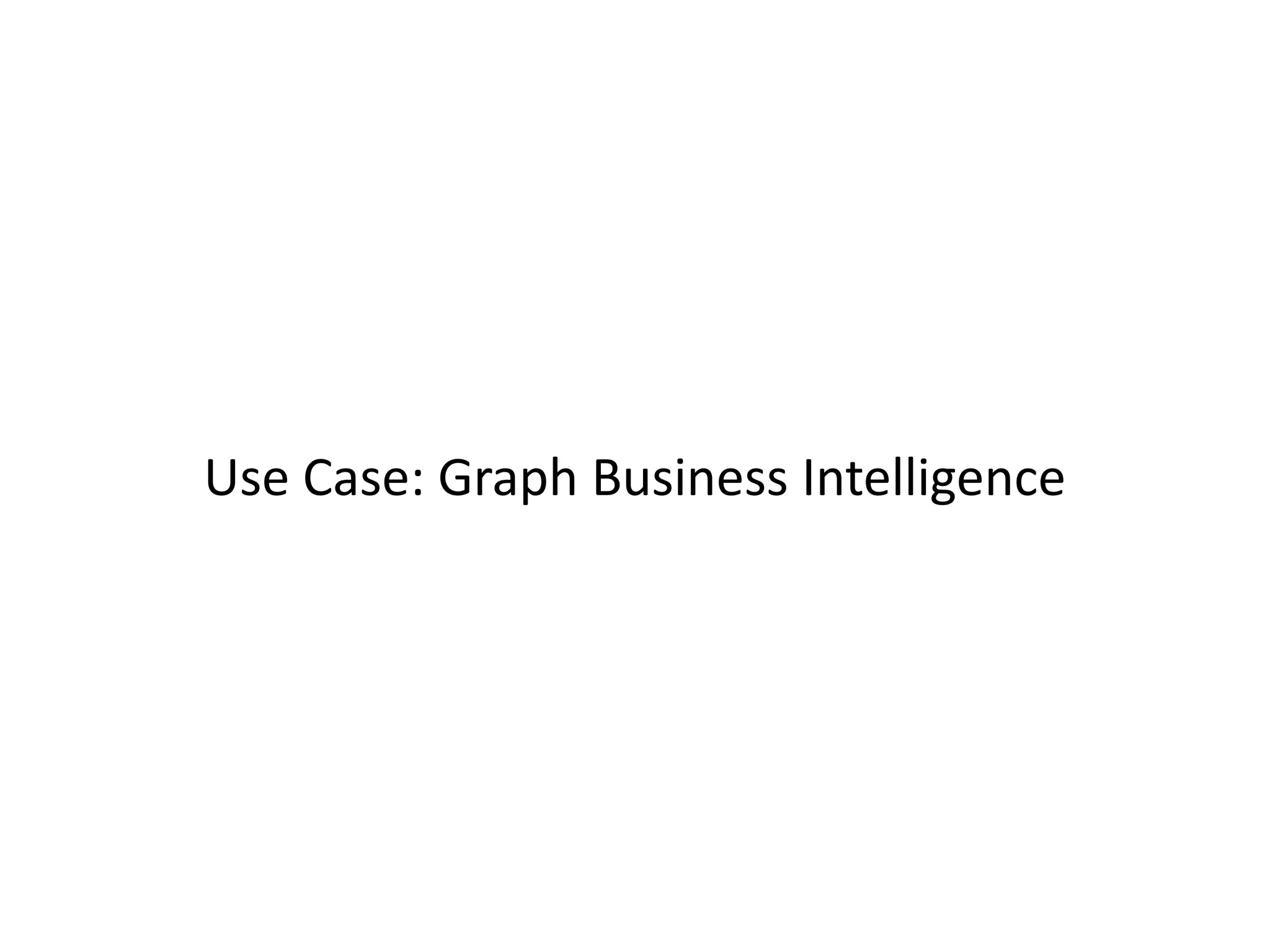
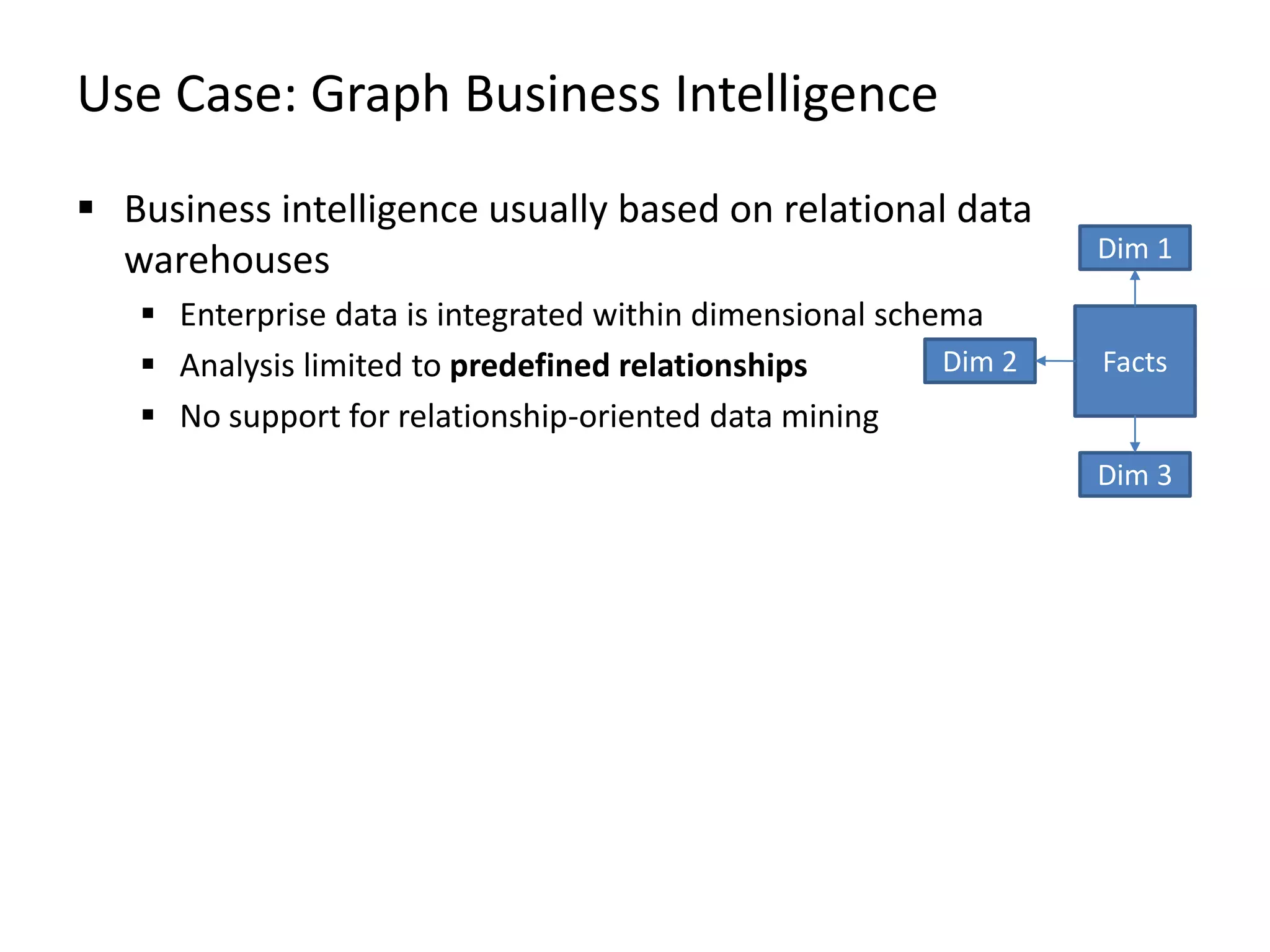
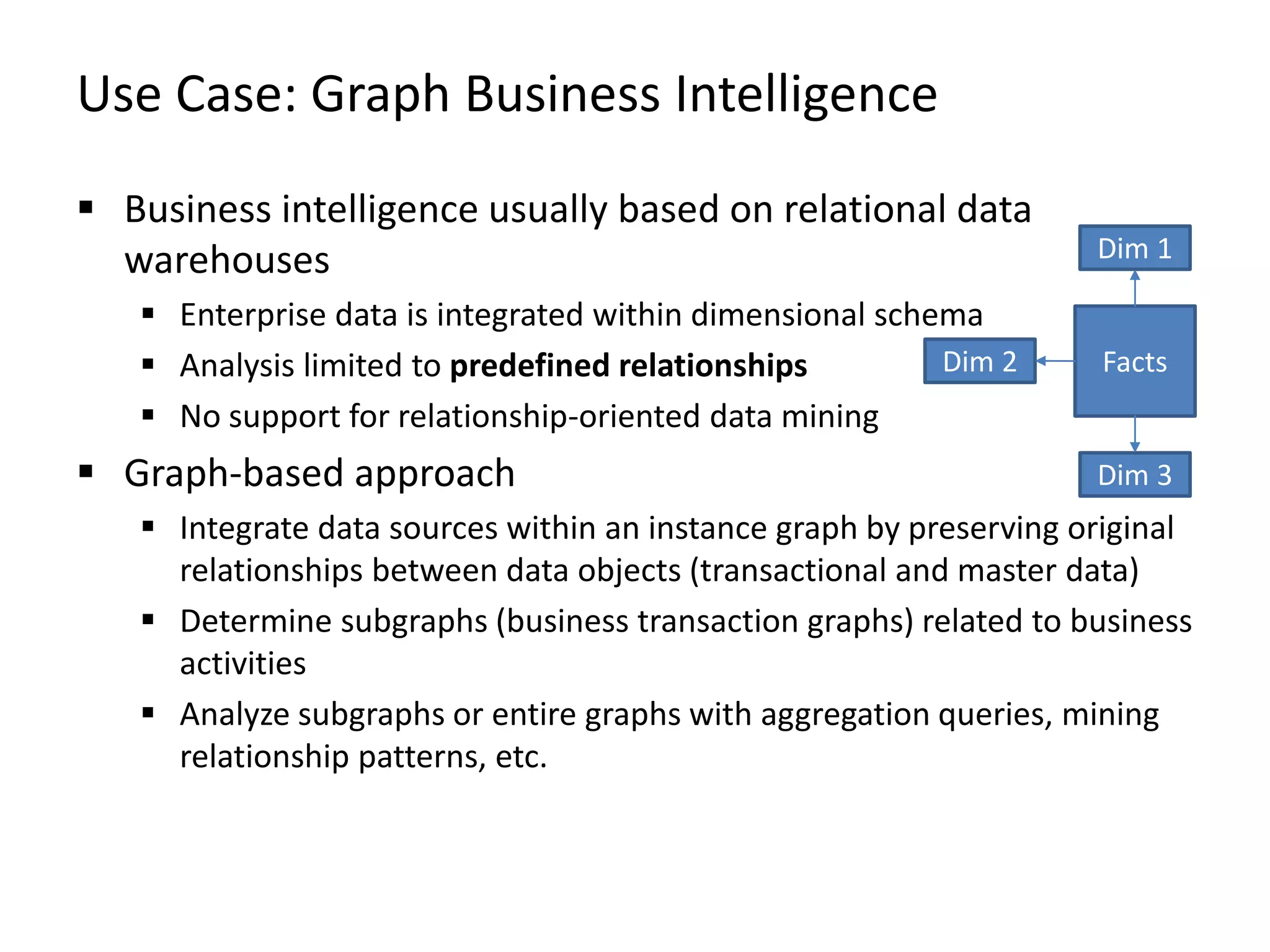
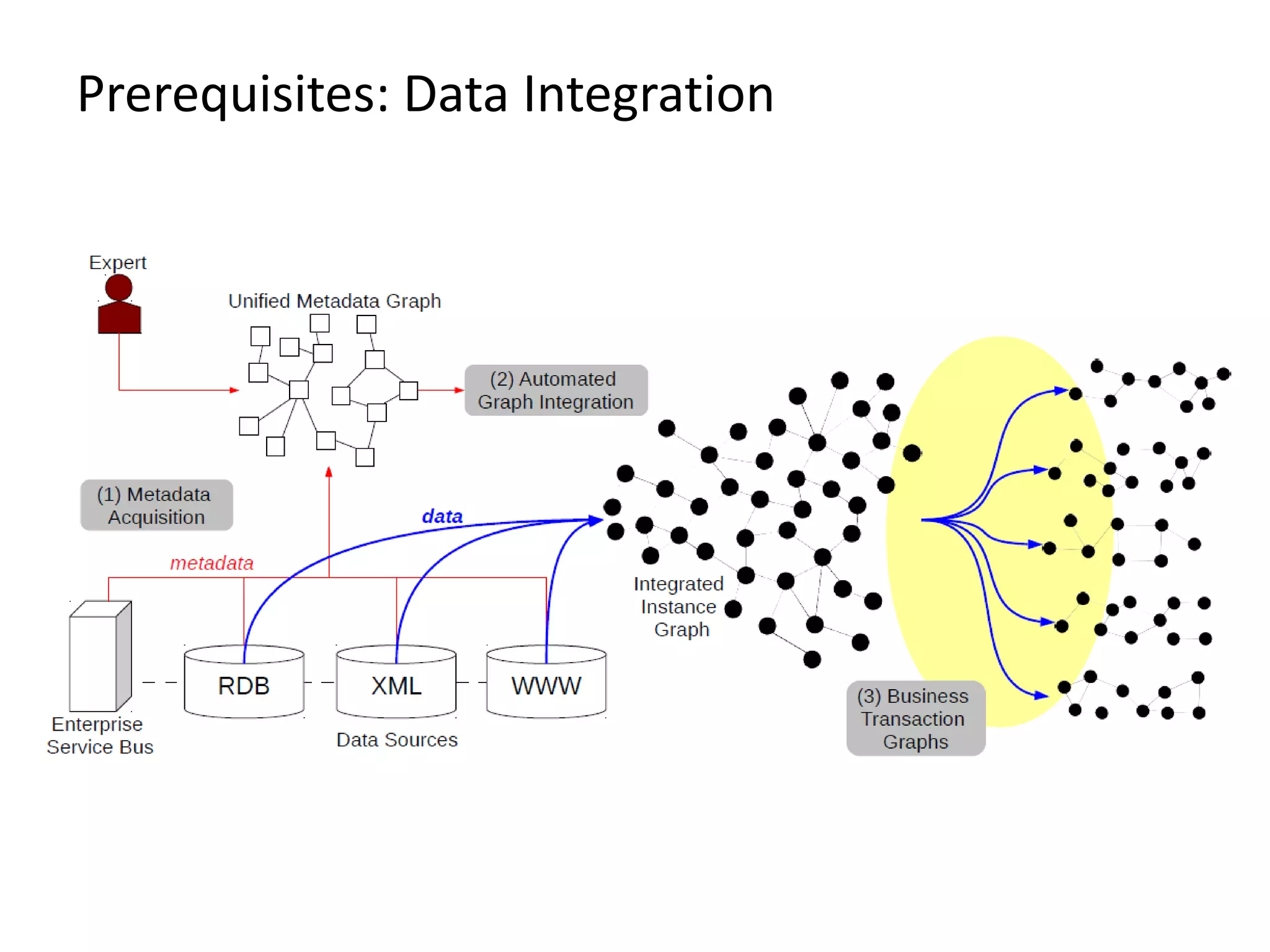
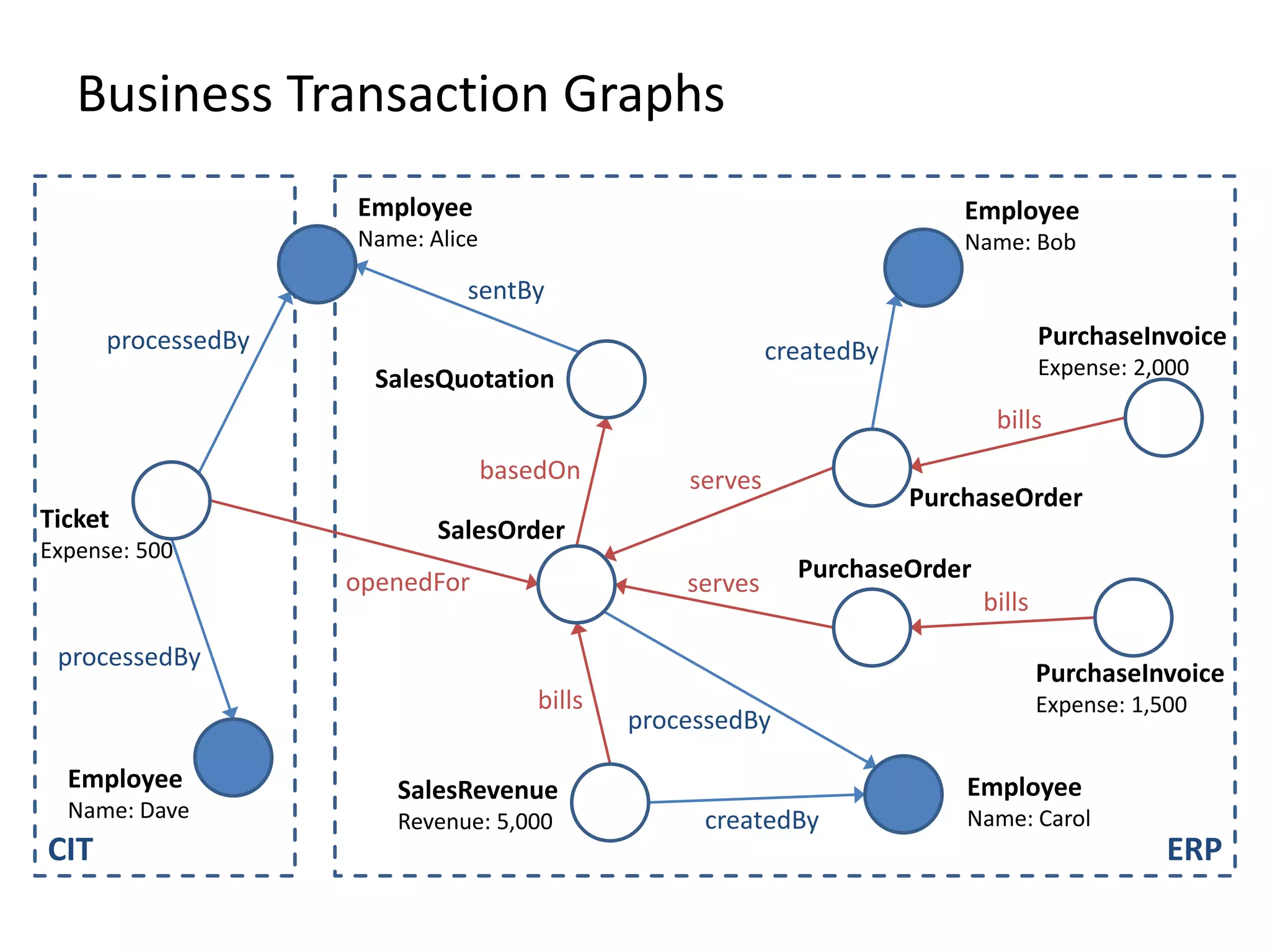
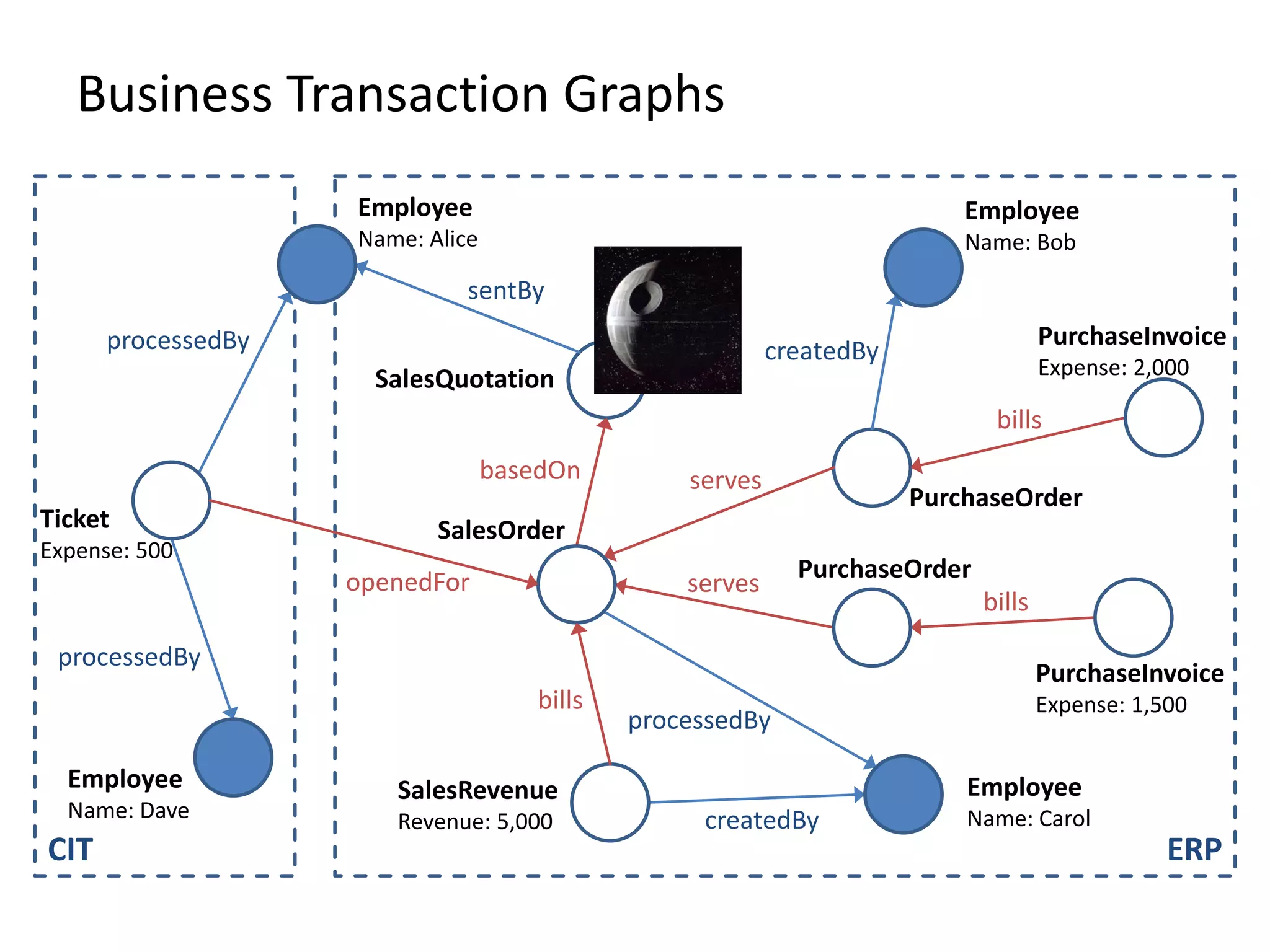
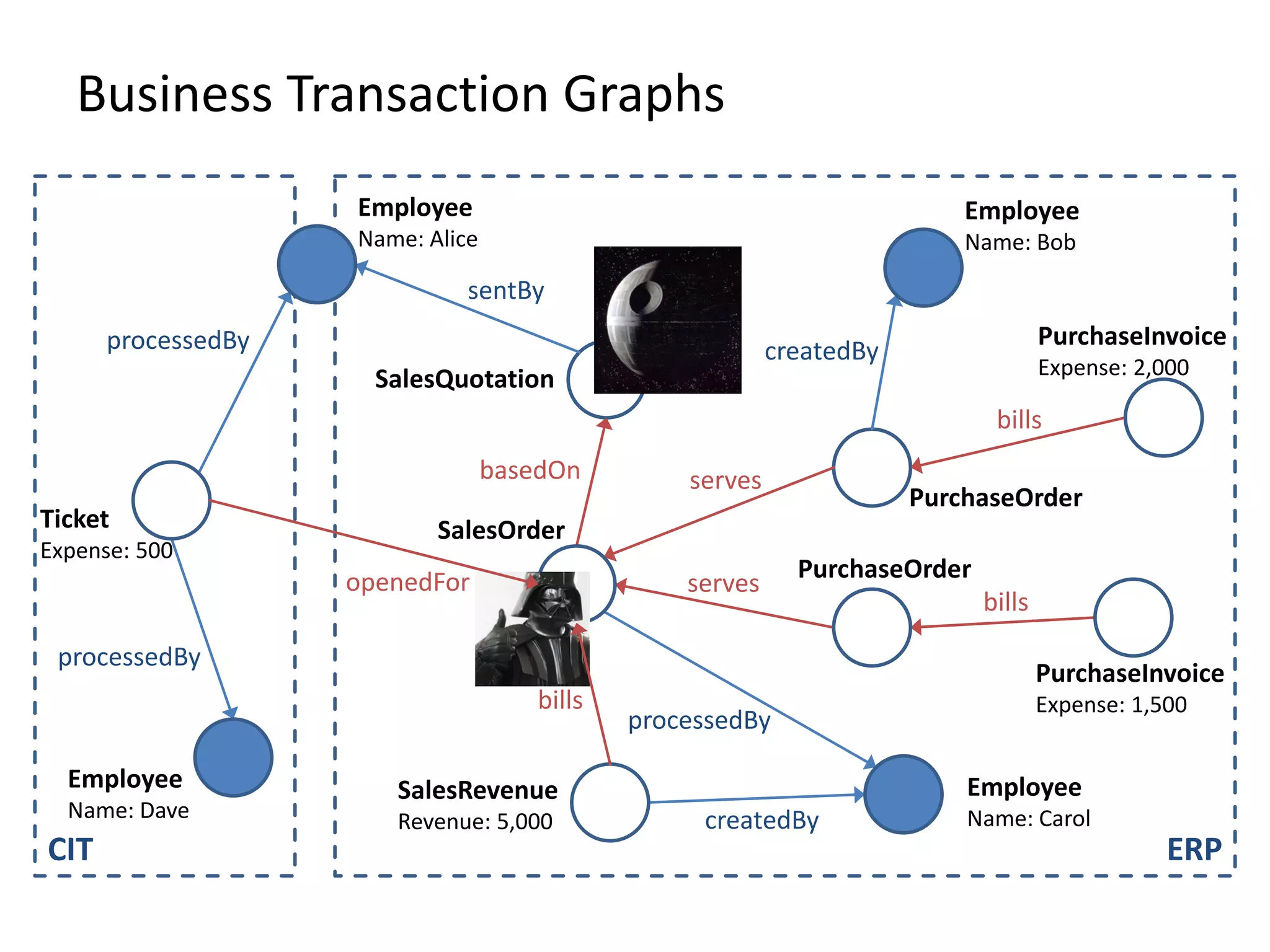
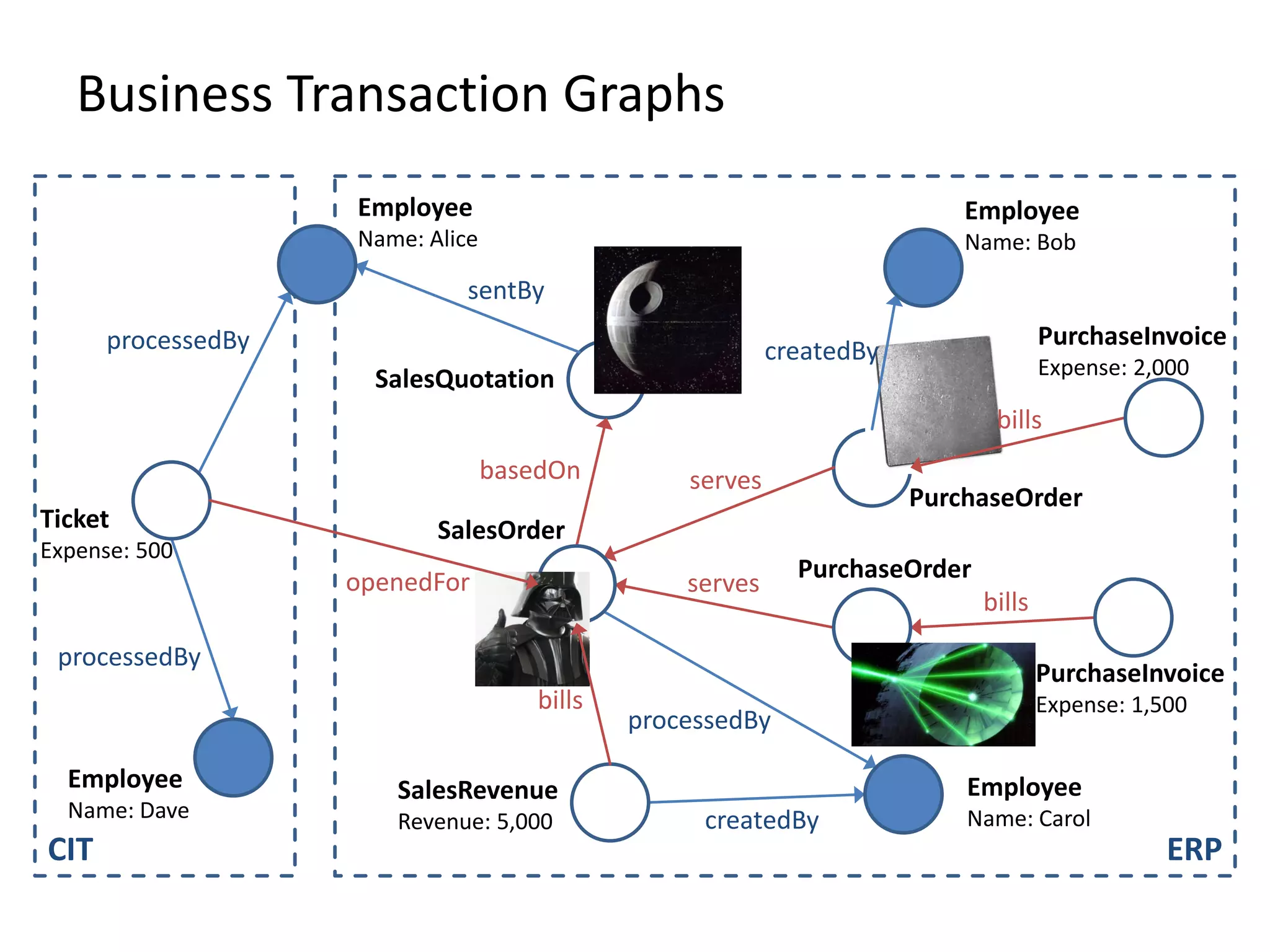
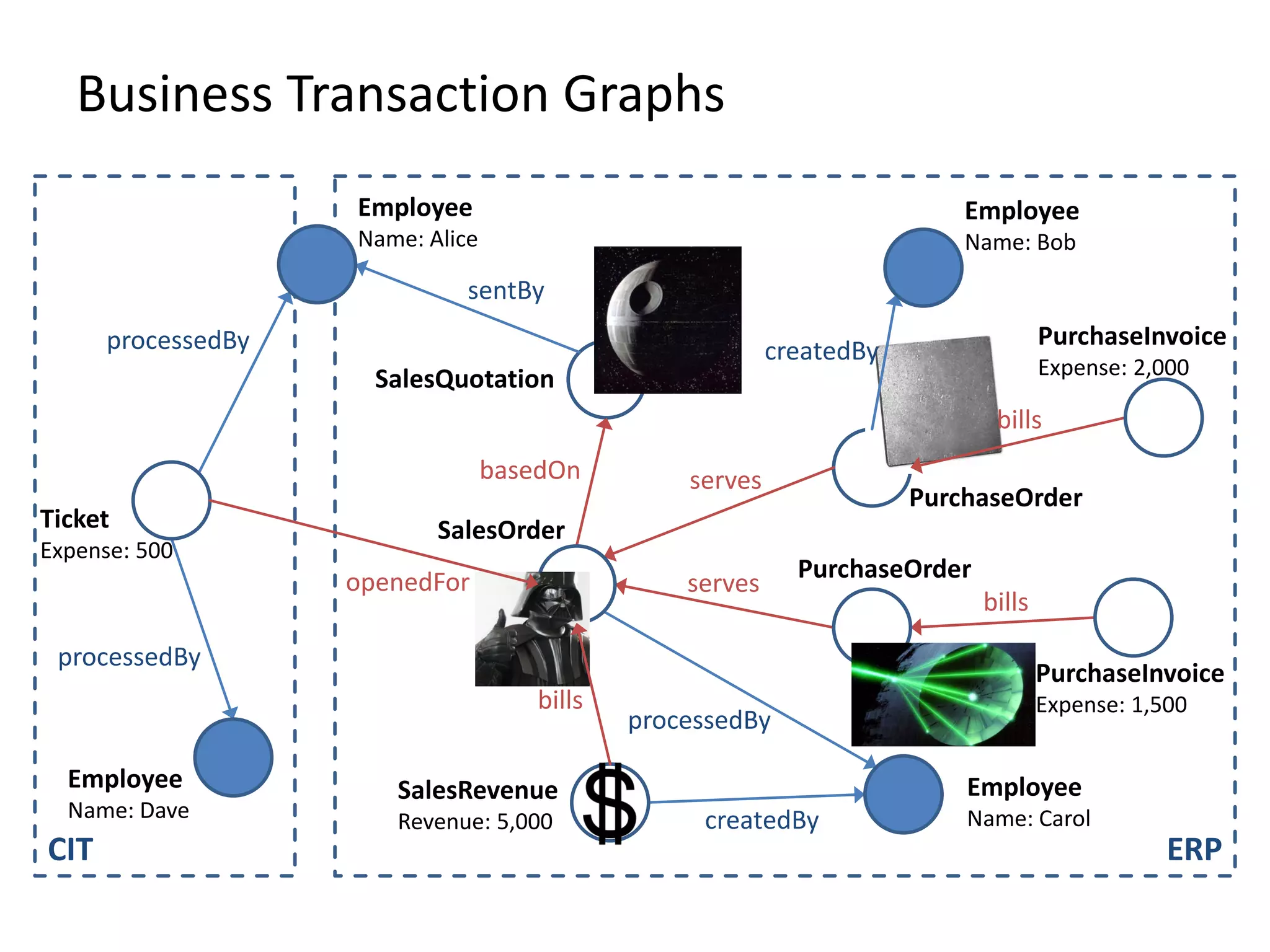
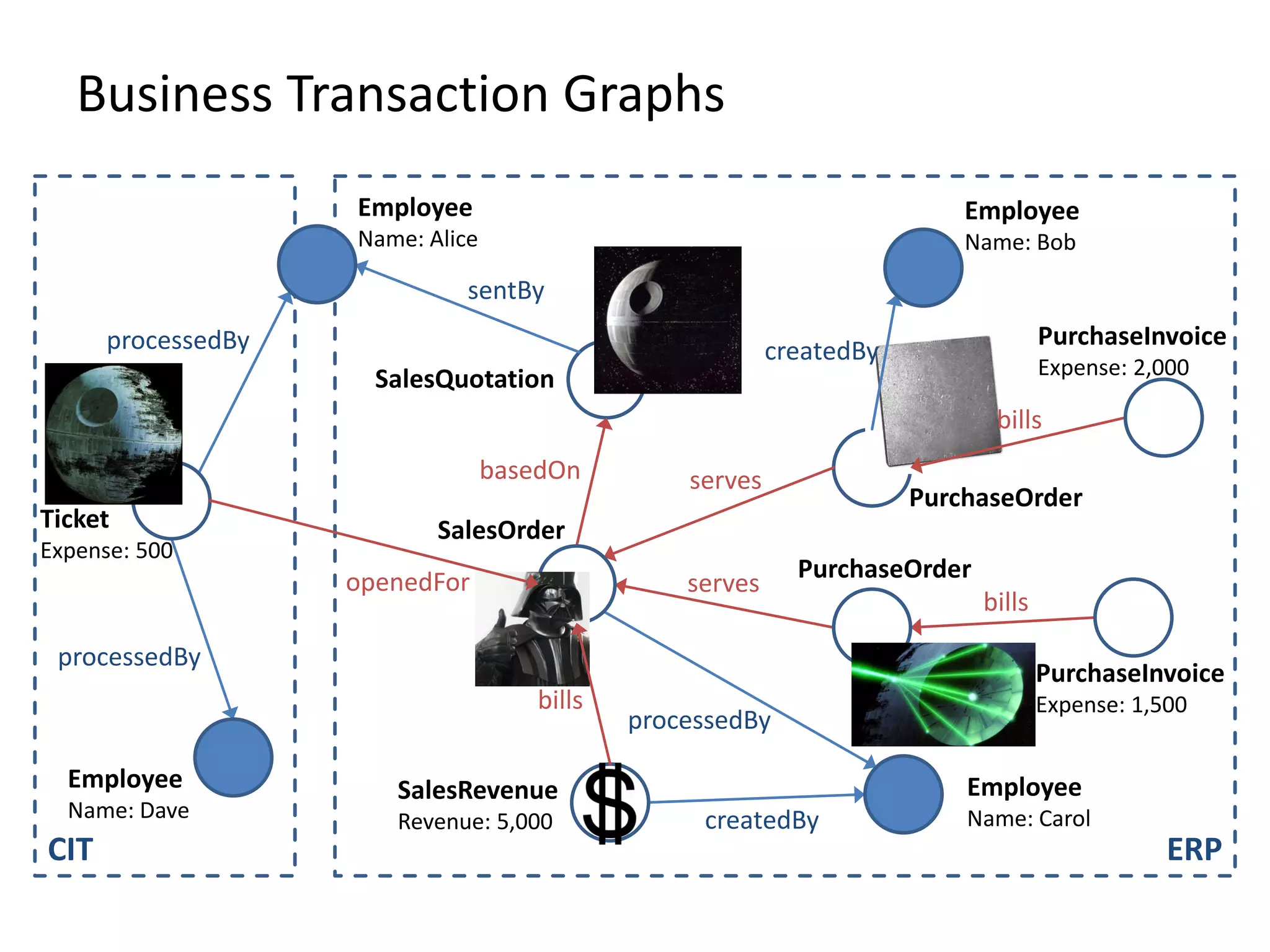
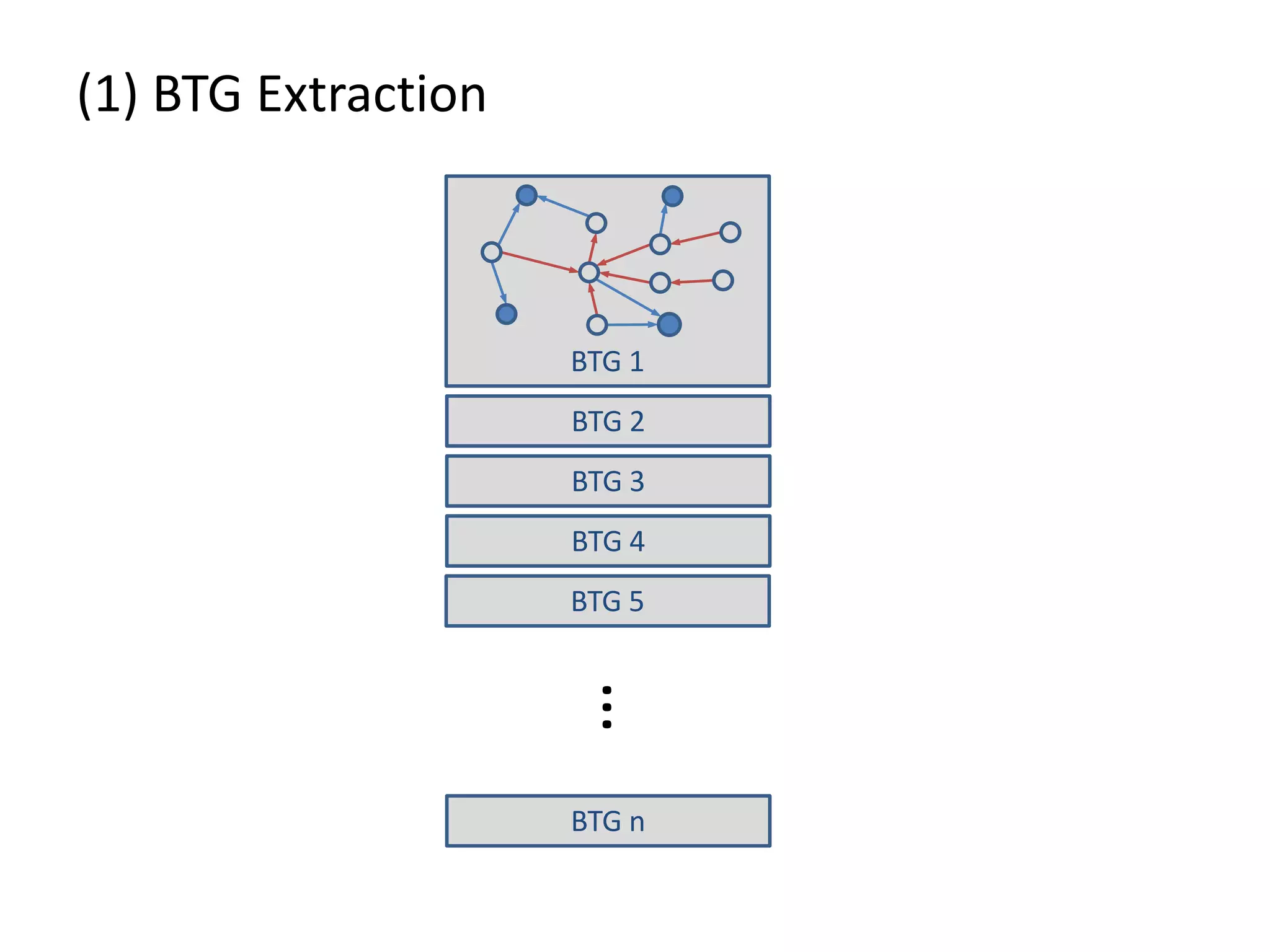
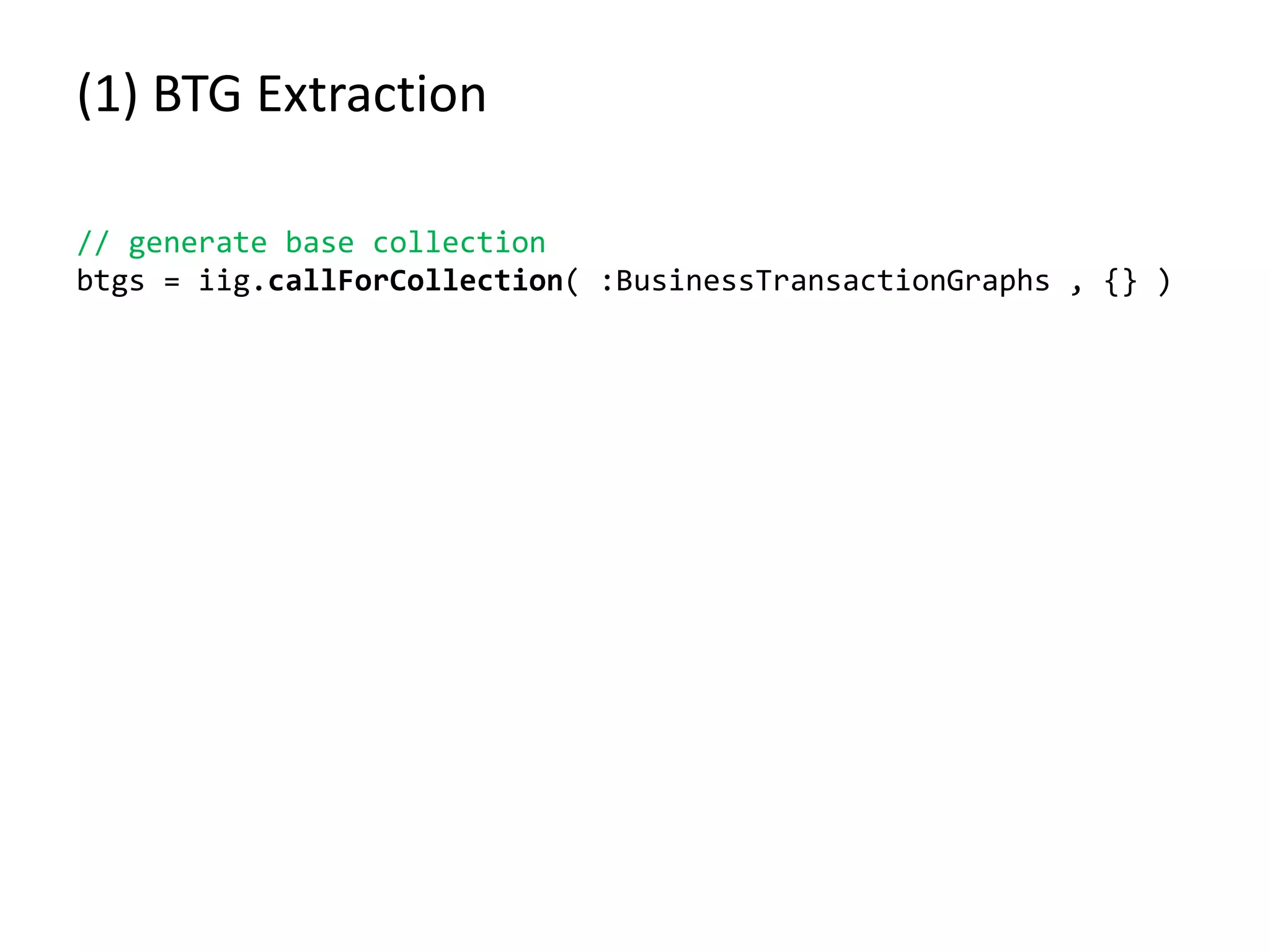
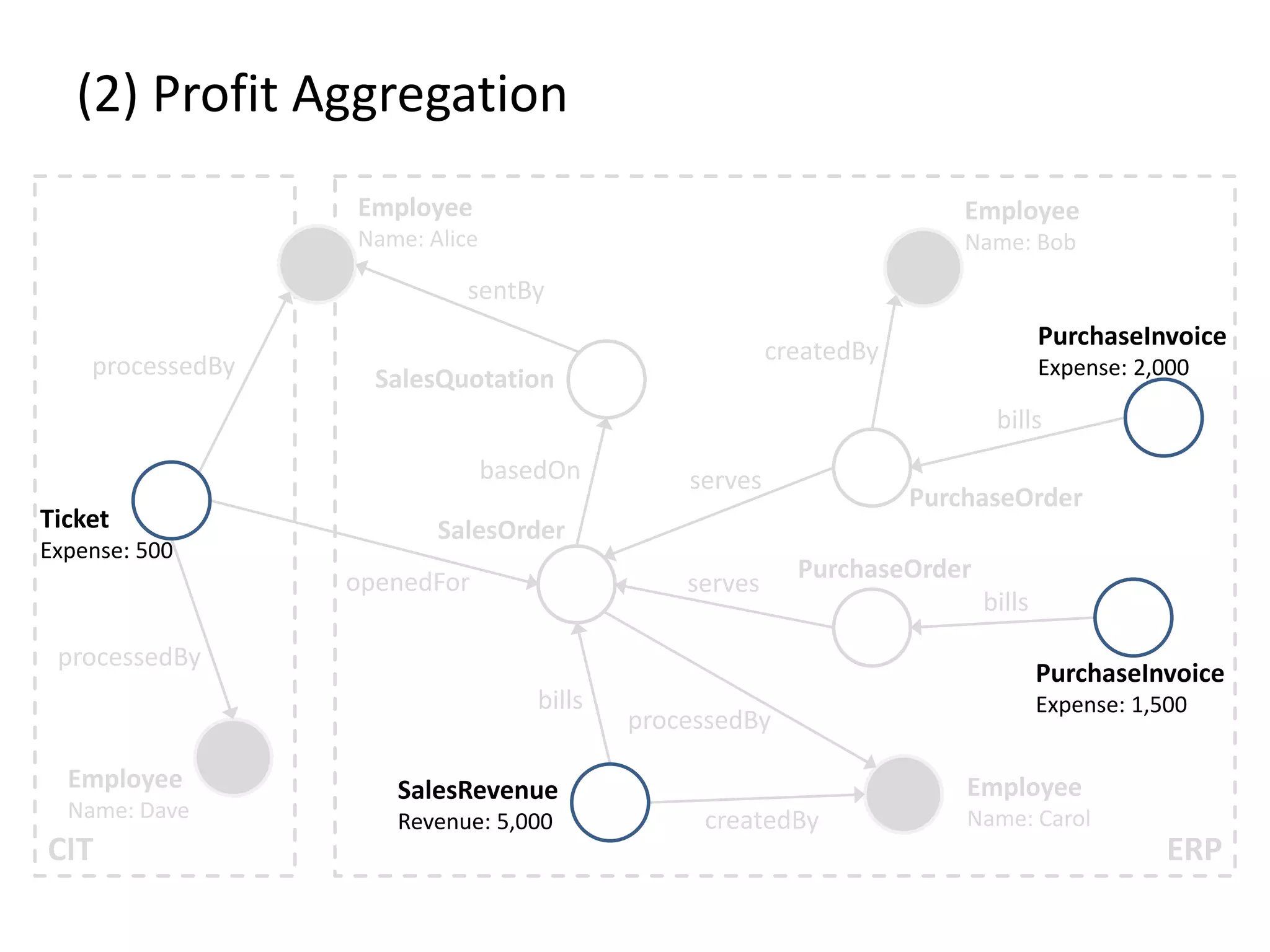
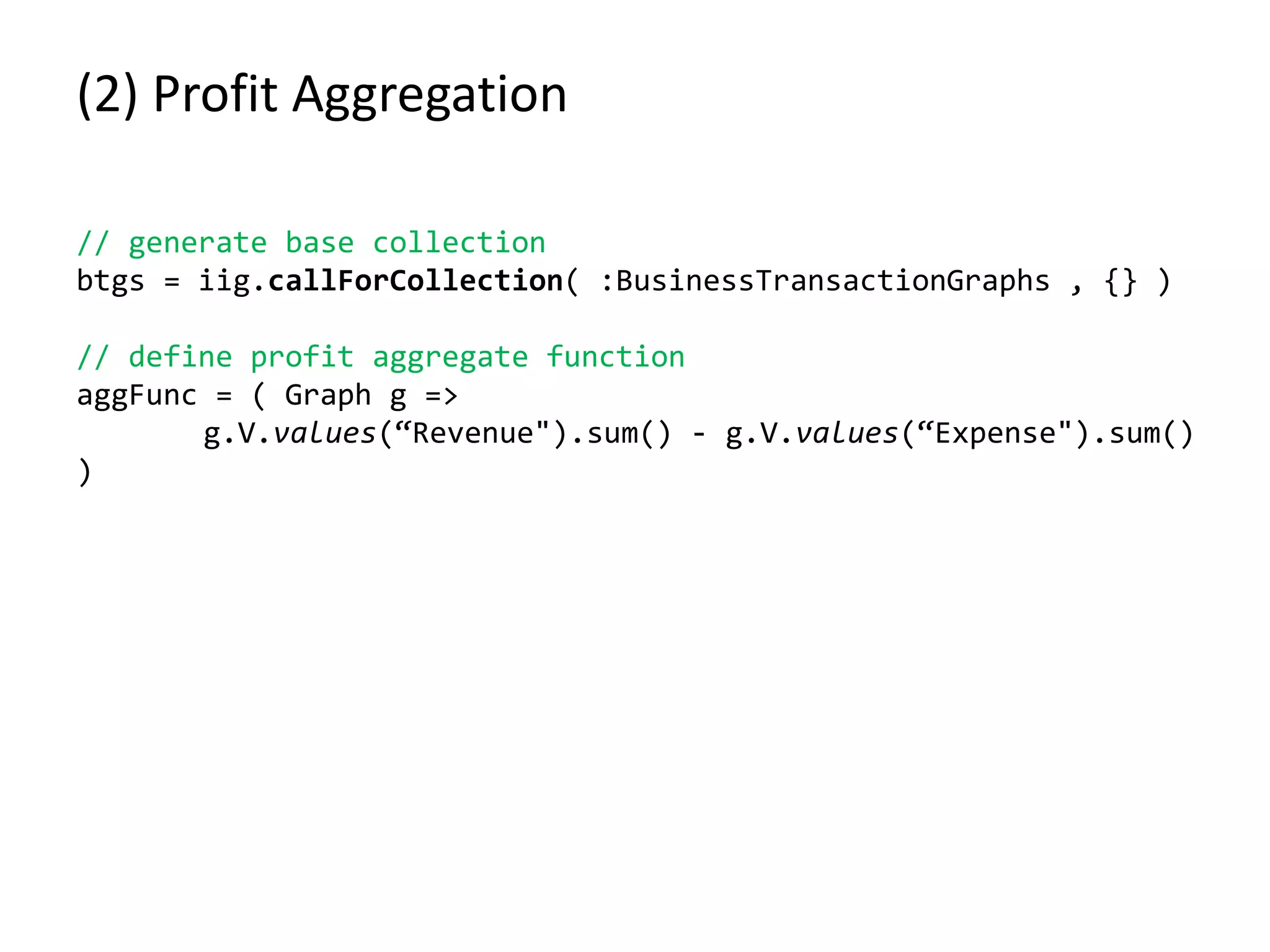
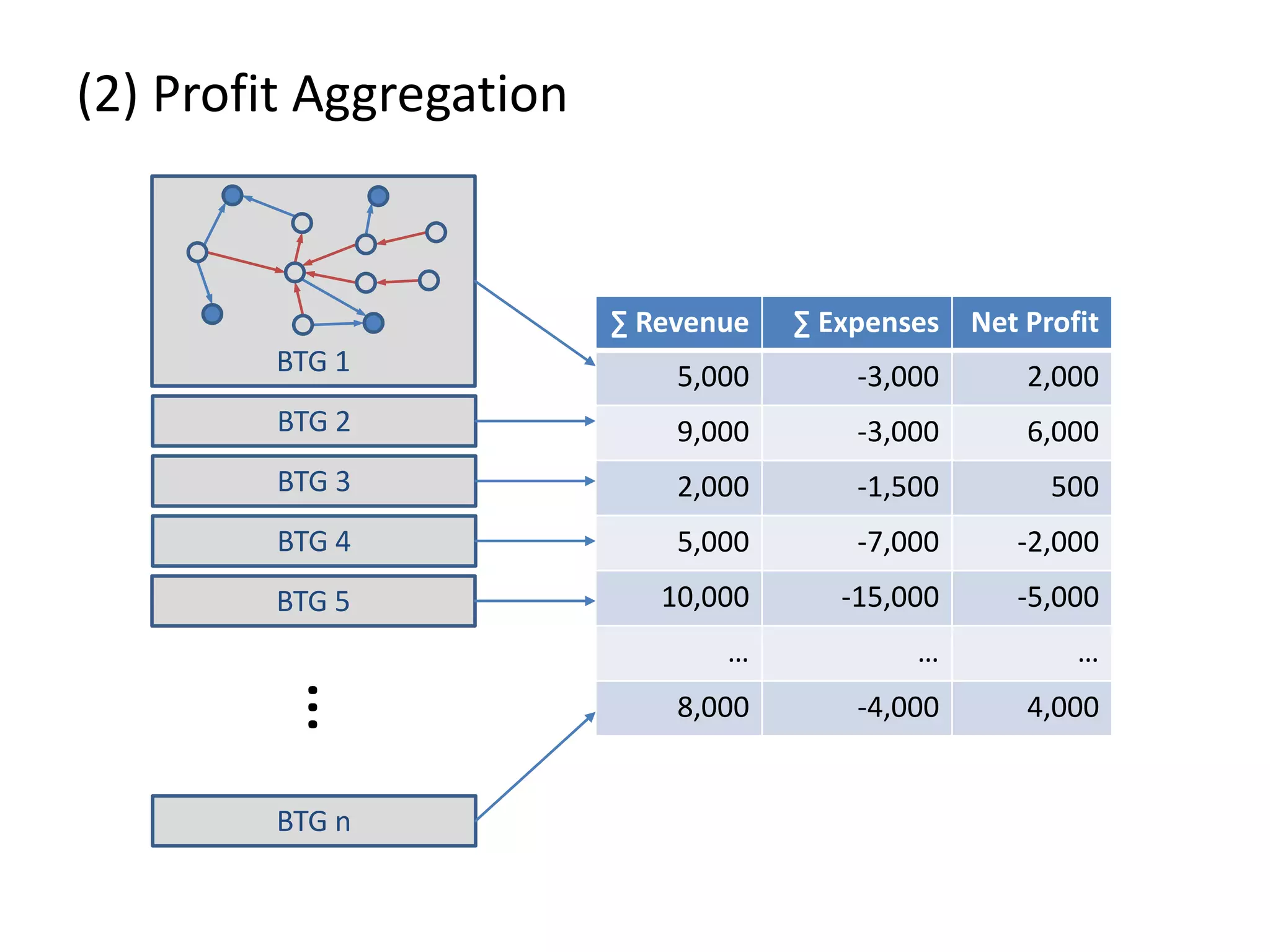
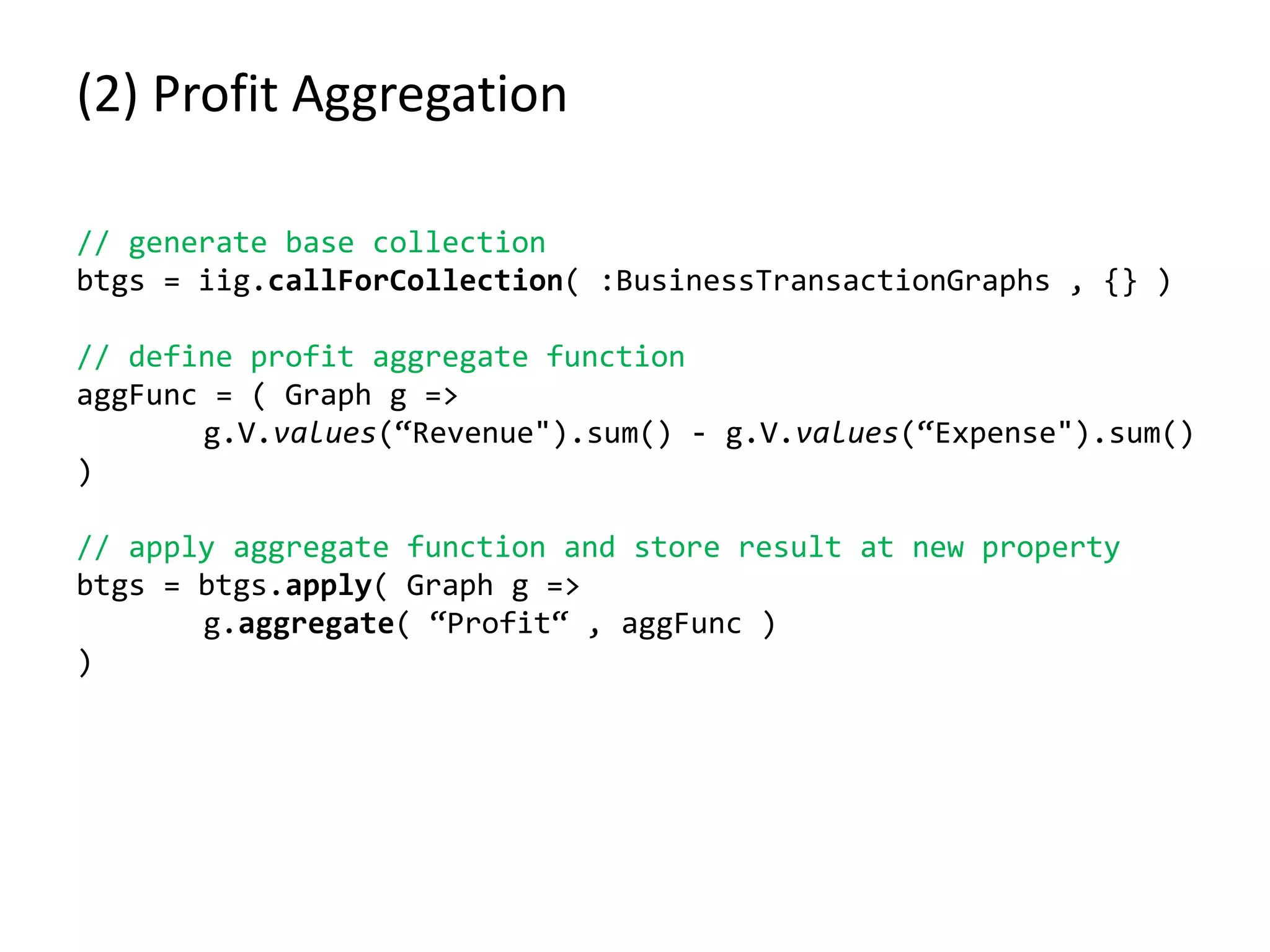
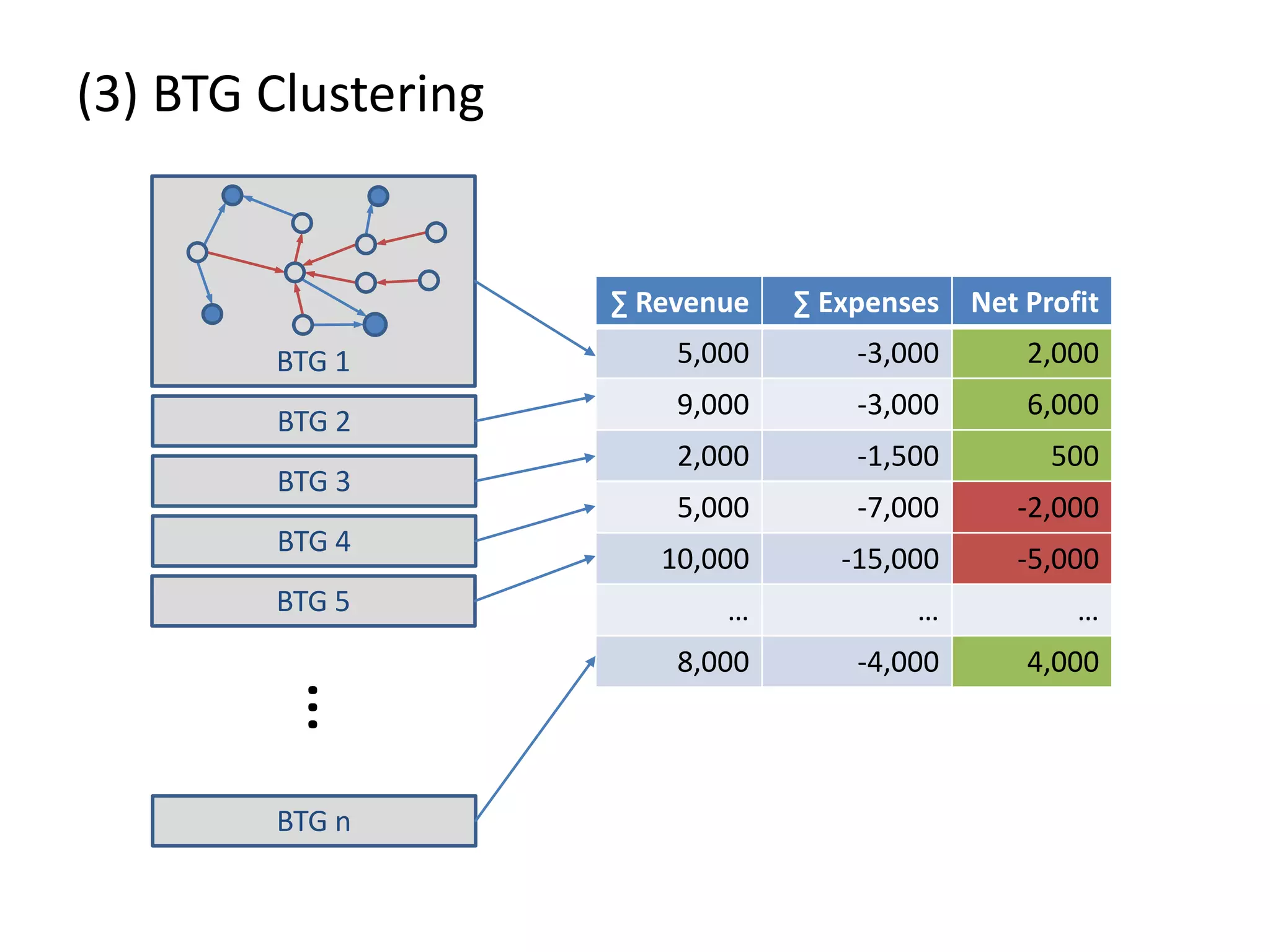
![(3) BTG Clustering // select profit and loss clusters profitBtgs = btgs.select( Graph g => g[“Profit”] >= 0 ) lossBtgs = btgs.difference(profitBtgs)](https://image.slidesharecdn.com/gradoopflinkforward-151014071436-lva1-app6891/75/Gradoop-Scalable-Graph-Analytics-with-Apache-Flink-Flink-Forward-2015-59-2048.jpg)
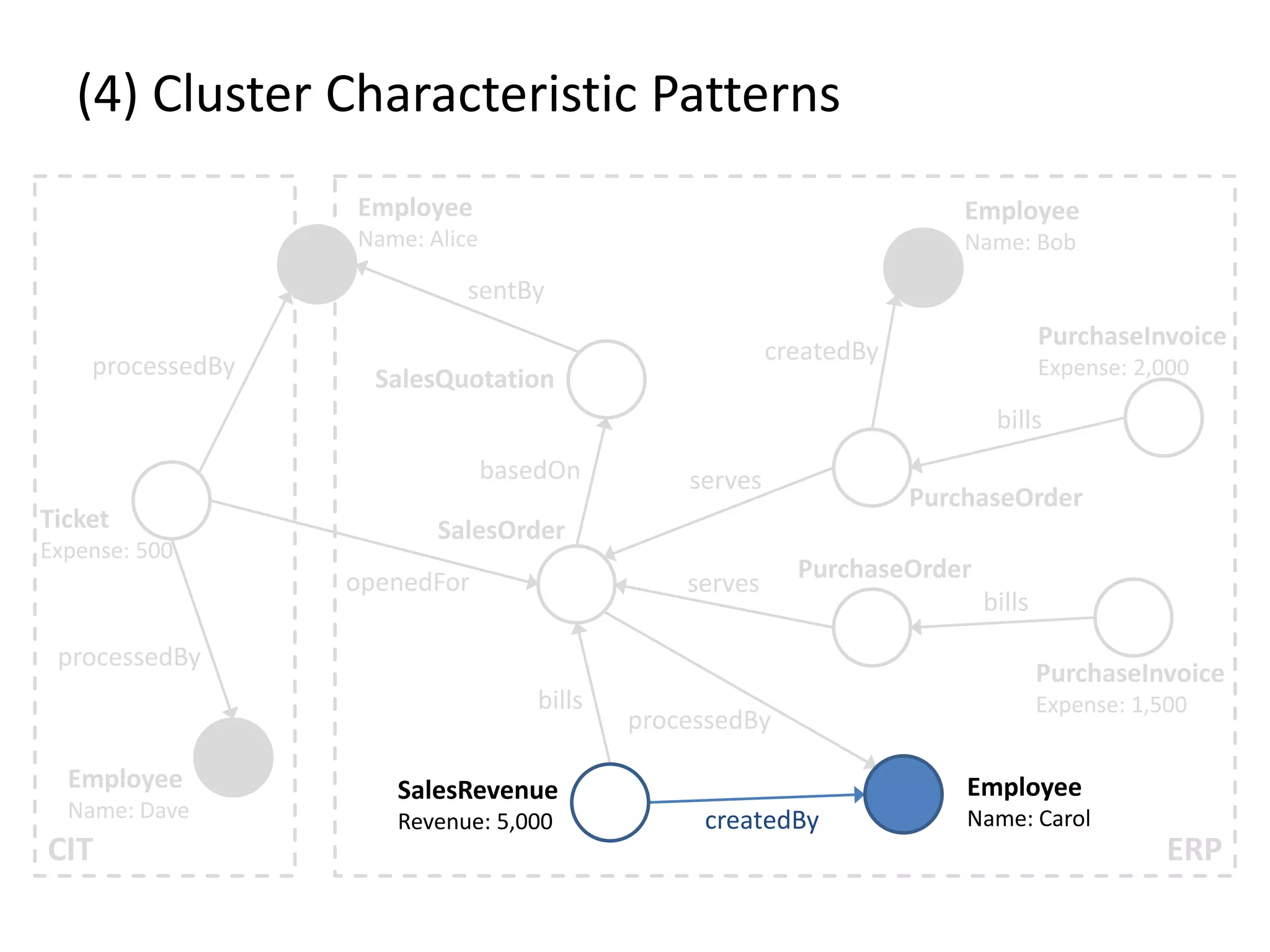
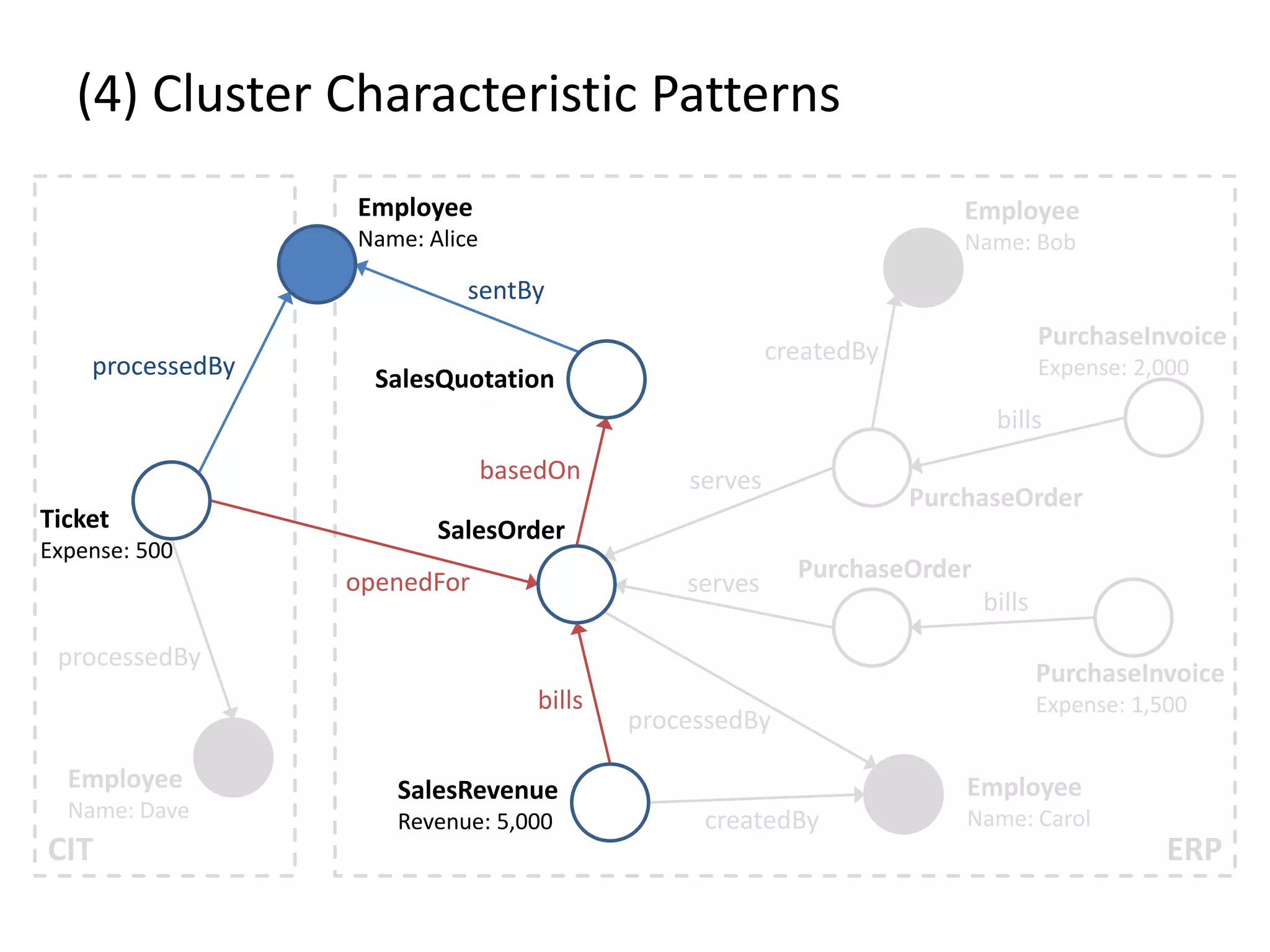
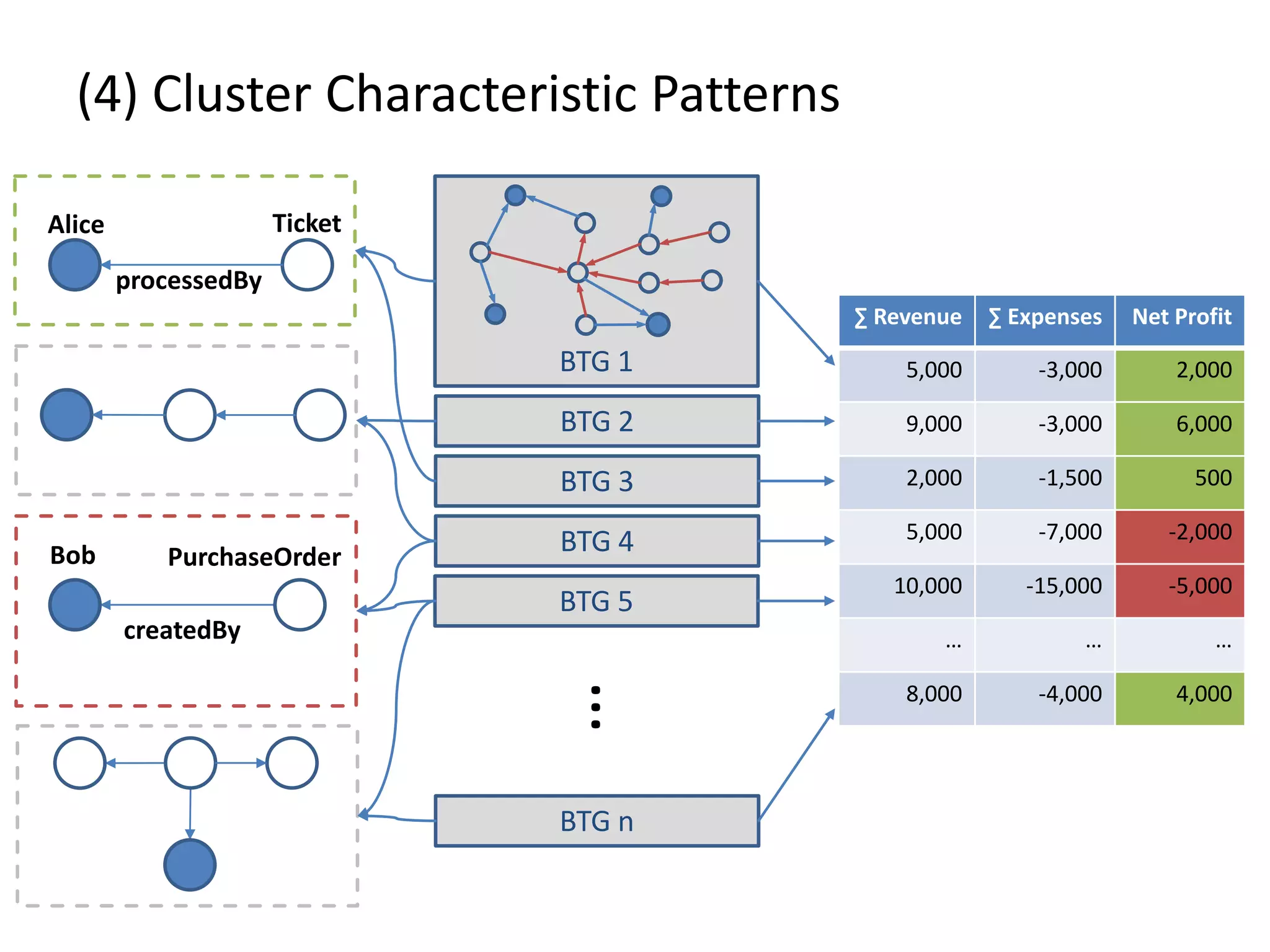
![(4) Cluster Characteristic Patterns // select profit and loss clusters profitBtgs = btgs.select( Graph g => g[“Profit”] >= 0 ) lossBtgs = btgs.difference(profitBtgs) // apply magic profitFreqPats = profitBtgs.callForCollection( :FrequentSubgraphs , {“Threshold”:0.7} ) lossFreqPats = lossBtgs.callForCollection( :FrequentSubgraphs , {“Threshold”:0.7} ) // determine cluster characteristic patterns trivialPats = profitFreqPats.intersect(lossFreqPats) profitCharPatterns = profitFreqPats.difference(trivialPats) lossCharPatterns = lossFreqPats.difference(trivialPats)](https://image.slidesharecdn.com/gradoopflinkforward-151014071436-lva1-app6891/75/Gradoop-Scalable-Graph-Analytics-with-Apache-Flink-Flink-Forward-2015-63-2048.jpg)

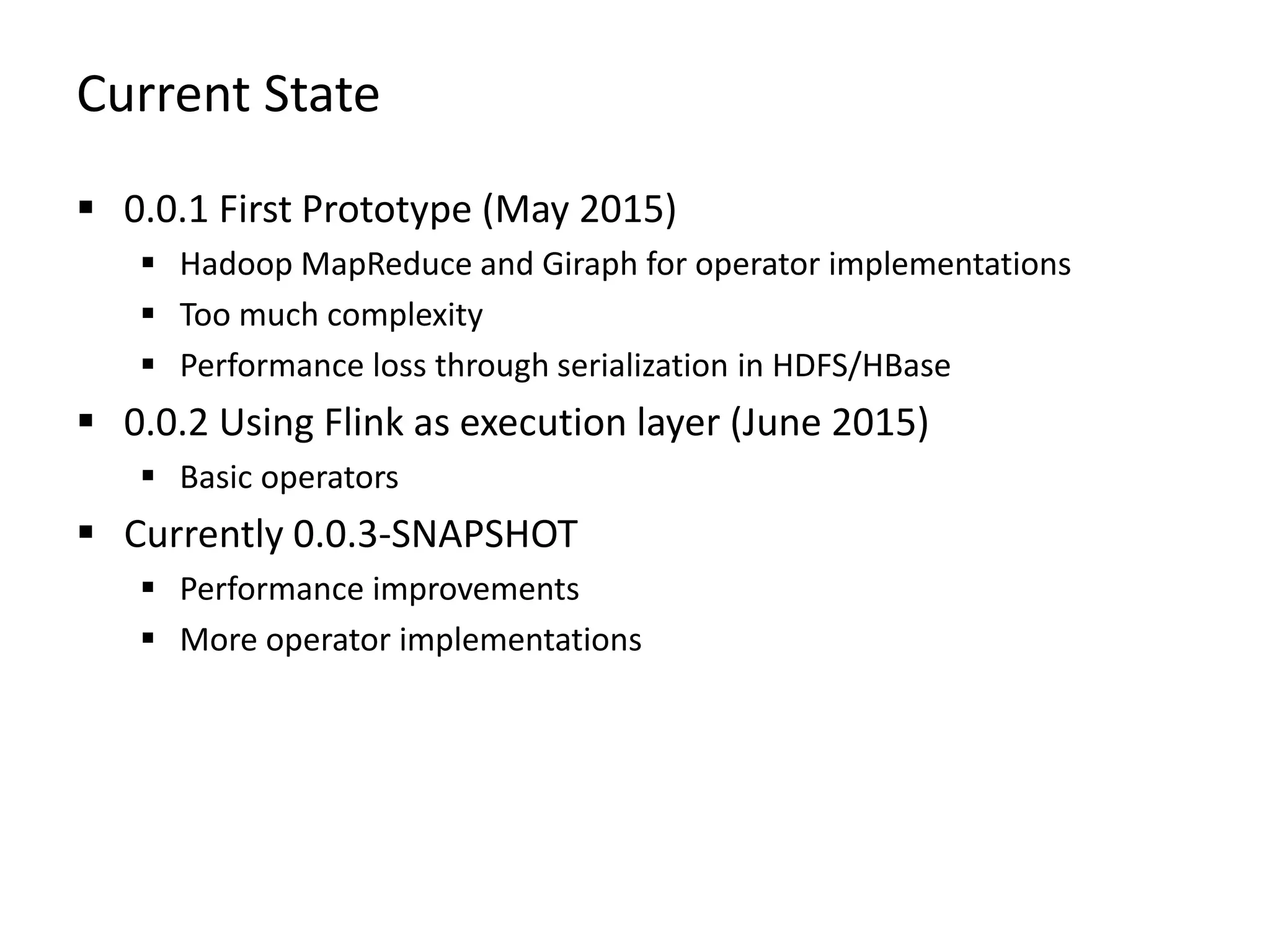
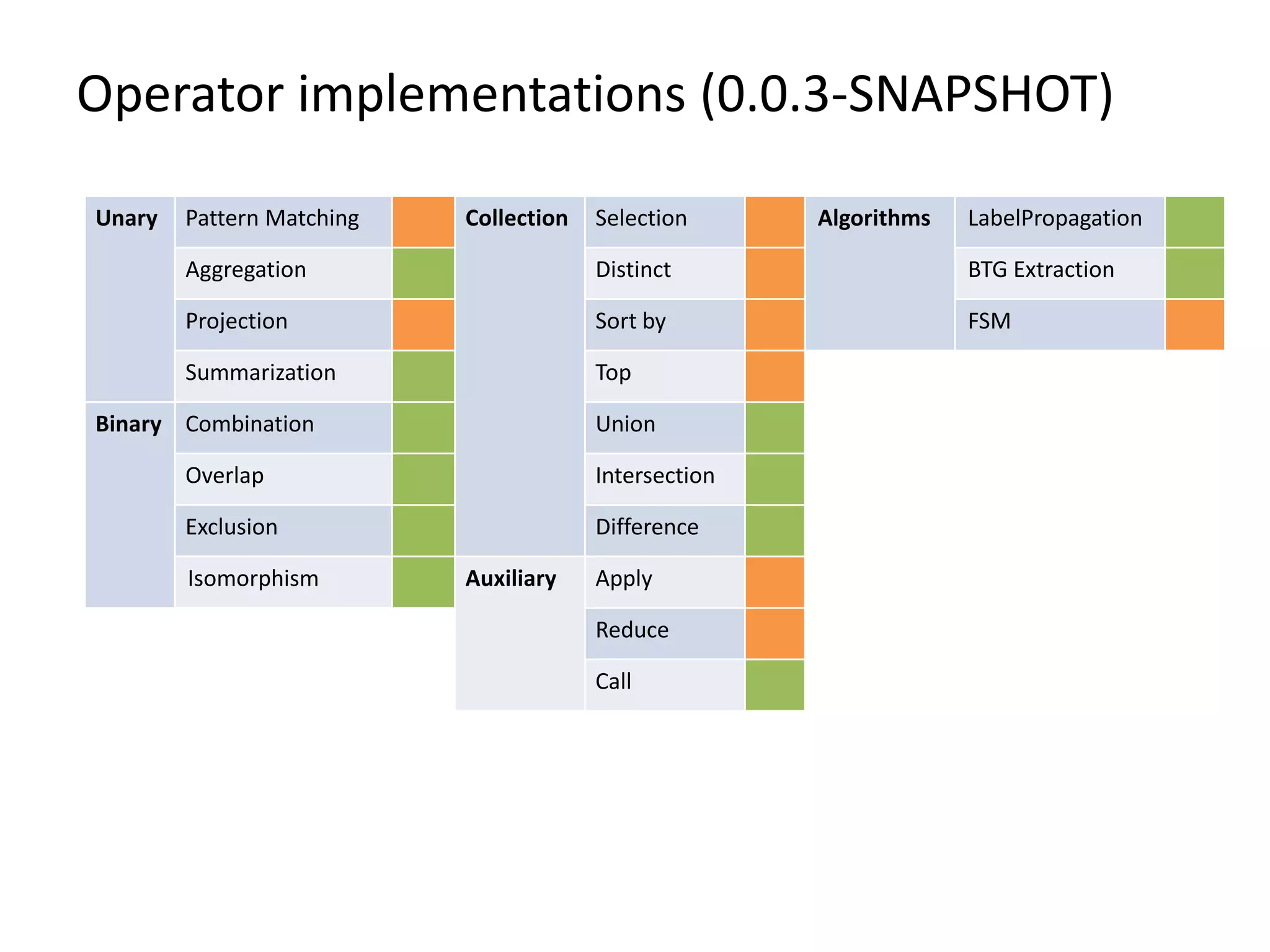
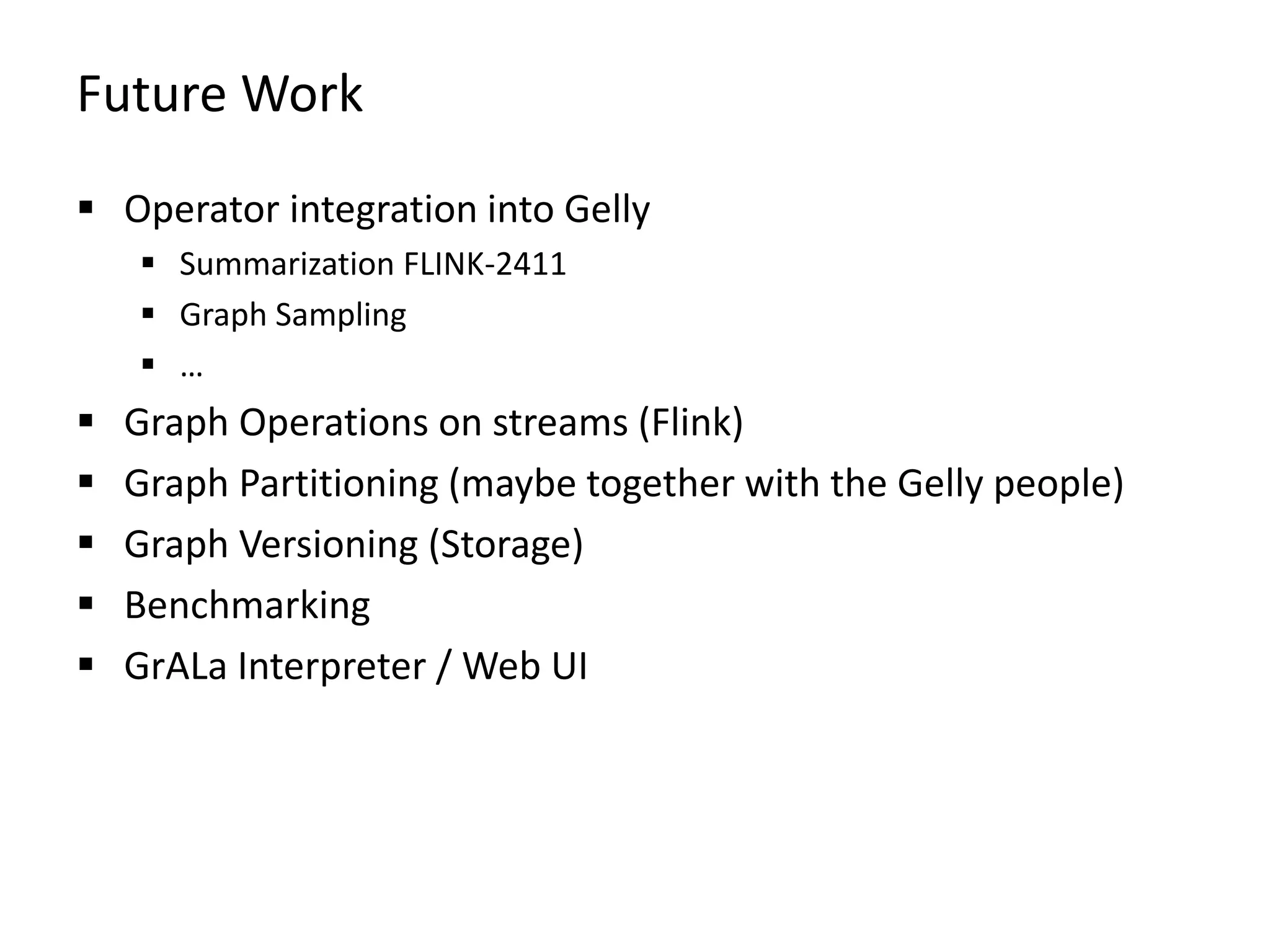
![Benchmarks Sneak Preview 0 200 400 600 800 1000 1200 1400 1 2 4 8 16 Time [s] # Worker Summarization (Vertex and Edge Labels) 16x Intel(R) Xeon(R) CPU E5-2430 v2 @ 2.50GHz (12 Cores), 48 GB RAM Hadoop 2.5.2, Flink 0.9.0 slots (per node) 12 jobmanager.heap.mb 2048 taskmanager.heap.mb 40960 Foodbroker Graph (https://github.com/dbs-leipzig/foodbroker) Generates BI process data 858,624,267 Vertices, 4,406,445,007 Edges, 663GB Payload](https://image.slidesharecdn.com/gradoopflinkforward-151014071436-lva1-app6891/75/Gradoop-Scalable-Graph-Analytics-with-Apache-Flink-Flink-Forward-2015-68-2048.jpg)
